Thousands of tourists from all over Russia as well as from abroad come to Moscow annually. But what can a tourist see in Moscow and where can a local citizen go? Despite the widely spread opinion the touristic Moscow does not end up with the Kremlin, on the contrary, it begins with it. There are plenty of beautiful and wonderful places to walk in Moscow. Tsaritsyno is one of them. One can come here for a day-time excursion, a mere walk on a warm summer evening or visit Tsaritsyno Museum. The last is suitable for those who would like to admire not only the outer but the inner interiors of the estate as well.
The Tsaritsyno Park is the conservation area and that implies a number of regulations to be in effect on its territory and compulsory for all visitors. Entrance to the Tsaritsyno Park with animals and on bicycles is prohibited. Detailed regulations are on the official web-site of the Tsaritsyno Museum-reserve.
How to Get to Tsaritsyno
There are two metro stations next to the Tsaritsyno Park: “Tsaritsyno“ and “Orekhovo”. While the place where you begin your visit is of no importance in the Kolomenskoe Park, this approach is not suitable for Tsaritsyno. A theatre begins with a coatroom and the Tsaritsyno Park – with the central gate. There is no doubt that one will never try to access a theatre by a backdoor in order not to miss the red carpet.
The central gate of the Tsaritsyno Park is close to the “Tsaritsyno” metro station. From the station pass under the Railway Bridge and here you are at the destination point. And after exploring the whole territory of the park you can leave it from the “Orekhovo” station which is close to the park exit. The territory of the park is so huge that after a walk along it and exploration of museum one might be too tired to return back to the “Tsaritsyno” metro station.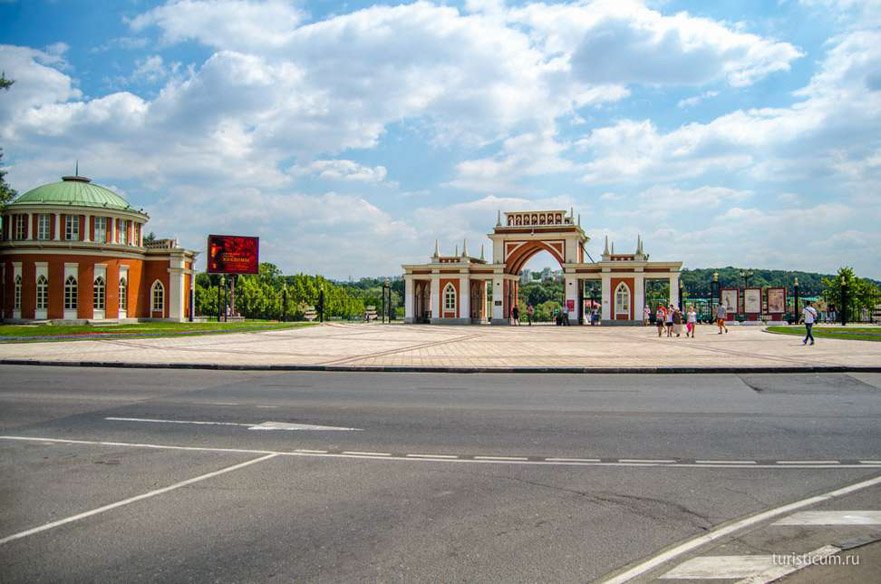
Behind the gate you find yourself in a fairy-tale. The entrance to the park separates us from reality and carries from a bustling metropolis to the 18th century. It is really hard to identify the century that time-machine has taken us to. Even the way flowerbeds are cut does not help us here. Not until we get to the Tsaritsyno park and estate. And here is a nice appetizer to begin with.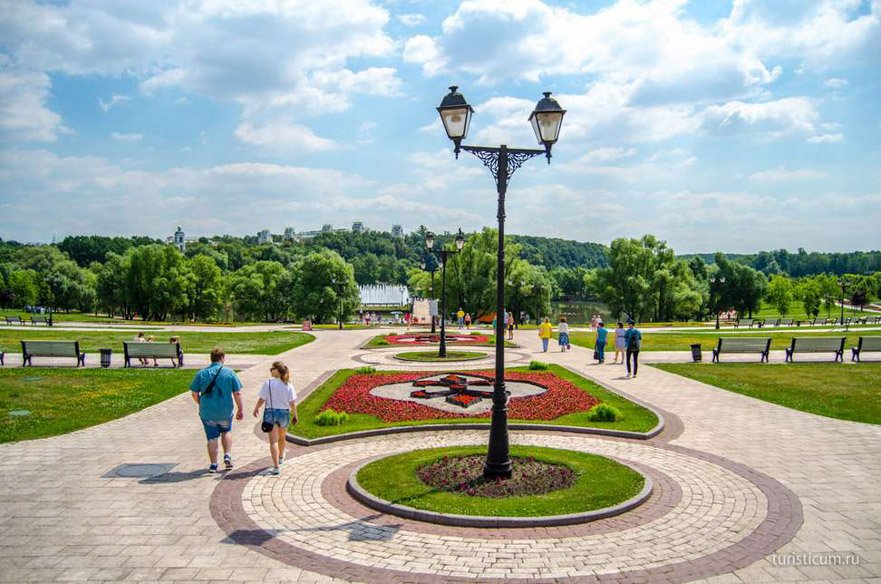
To our sight opens a beautiful composition of the Middle Tsaritsyno Pound with a little artificial island in form of a horseshoe and light and music fountain. In fact there are two bridges to the fountain. And the fountain itself is surrounded with benches. This lets everyone to enjoy the beauty of the colored sprays in comfort. But it is very hard to stay in the sun during the midday heat since there are no trees by the fountain, fortunately there is enough of shadow from the trees around the pound itself.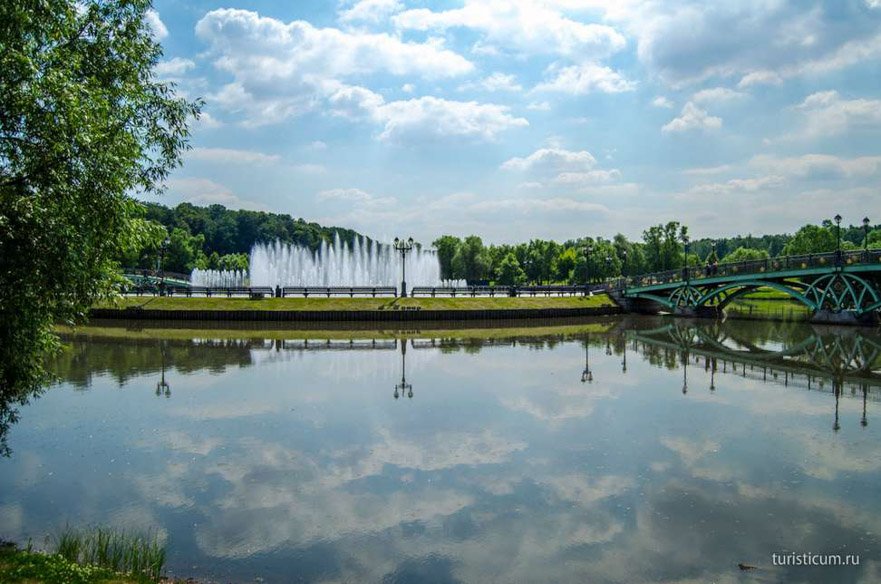
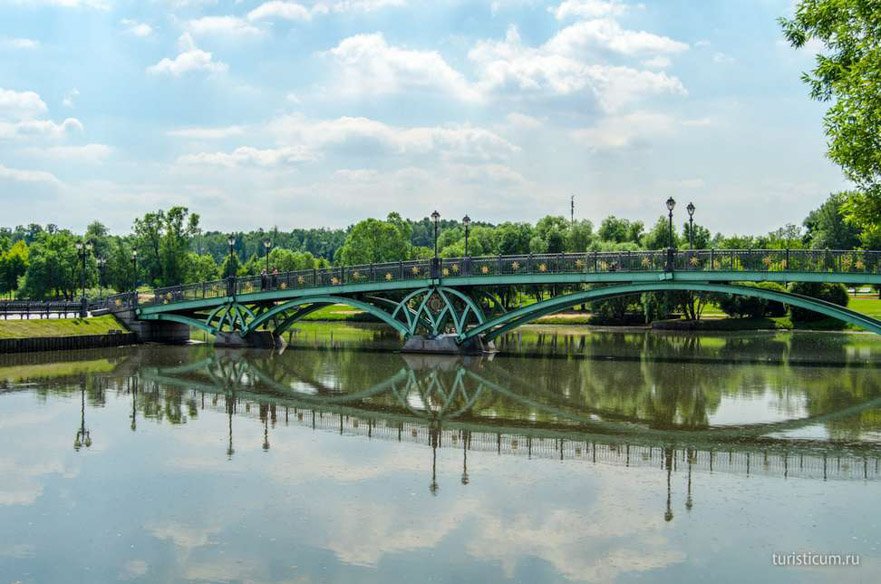
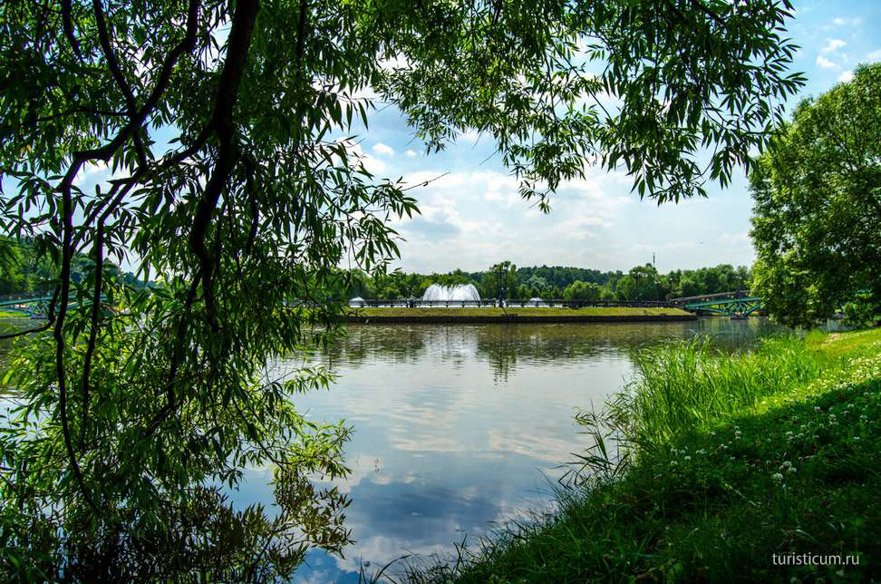
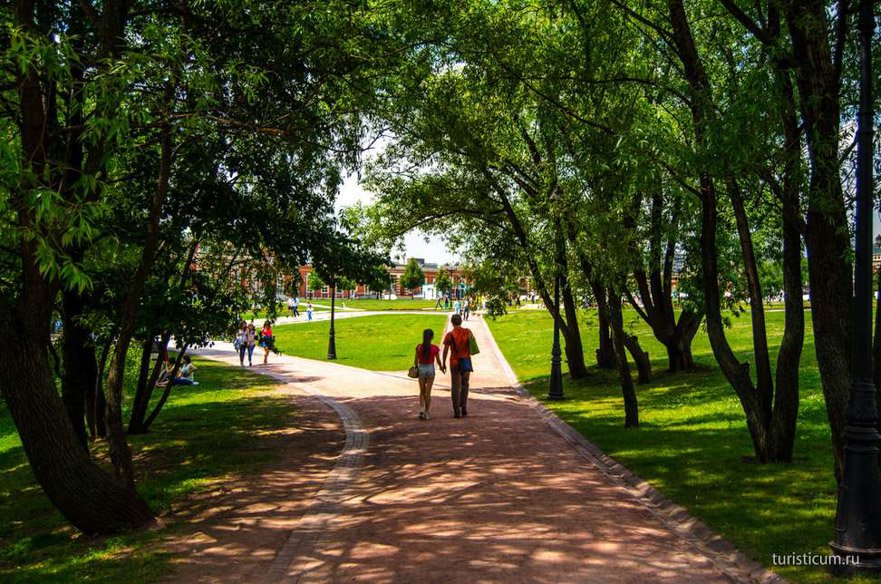
We go round the right part of the pound so that the Middle Tsaritsyno Pound remains on our left and the Upper Tsaritsyno Pound emerges on the right.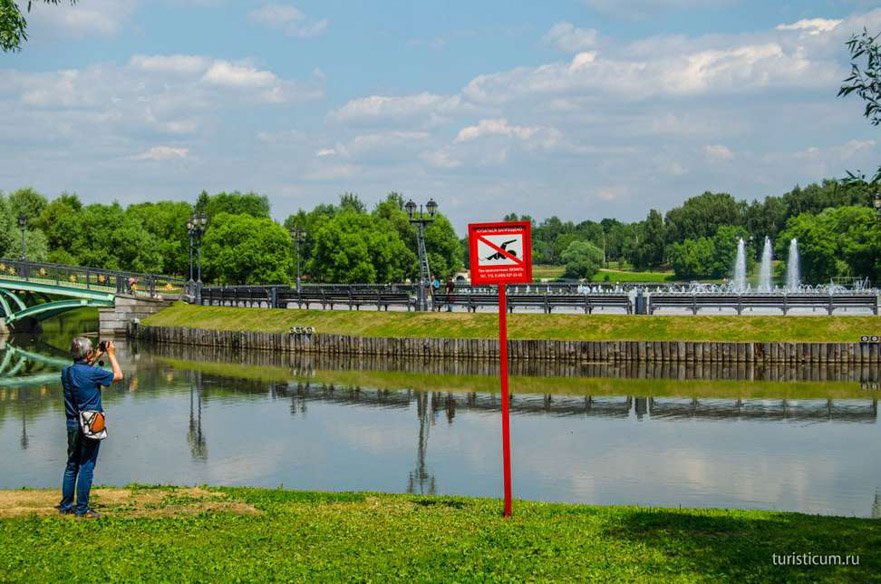
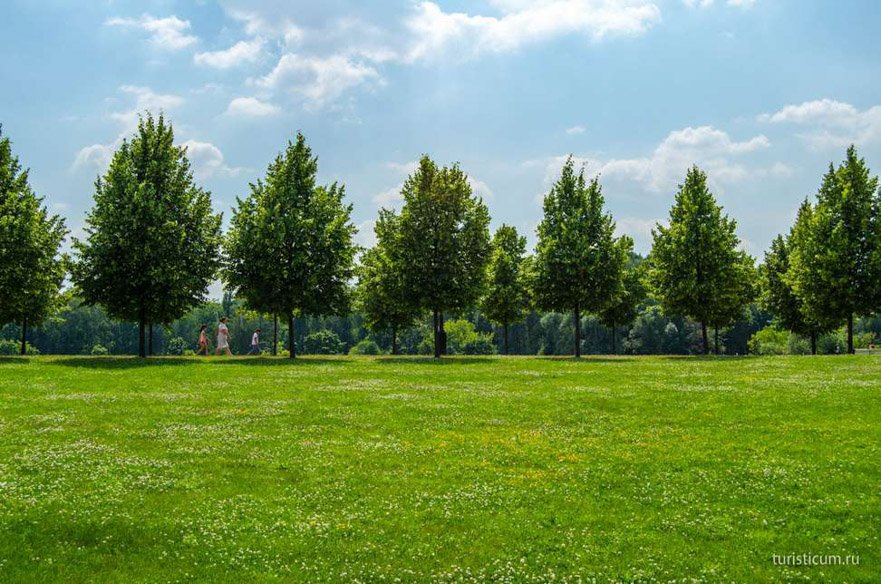
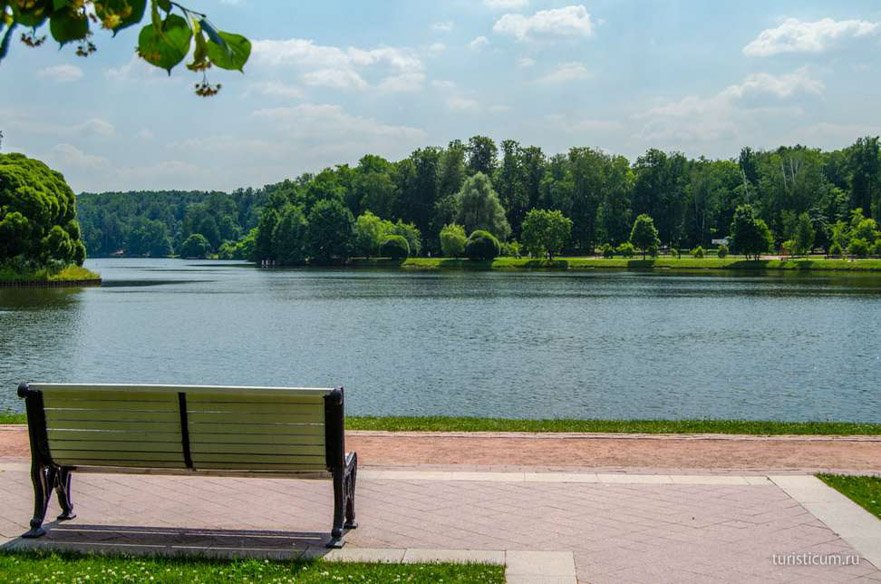
There is a little island called the Bird Island in this part of the pound. Besides, there are two more similar islands in the Upper Tsaritsyno Pound. The pound itself is quite big and walking round it will be a complicated thing to do.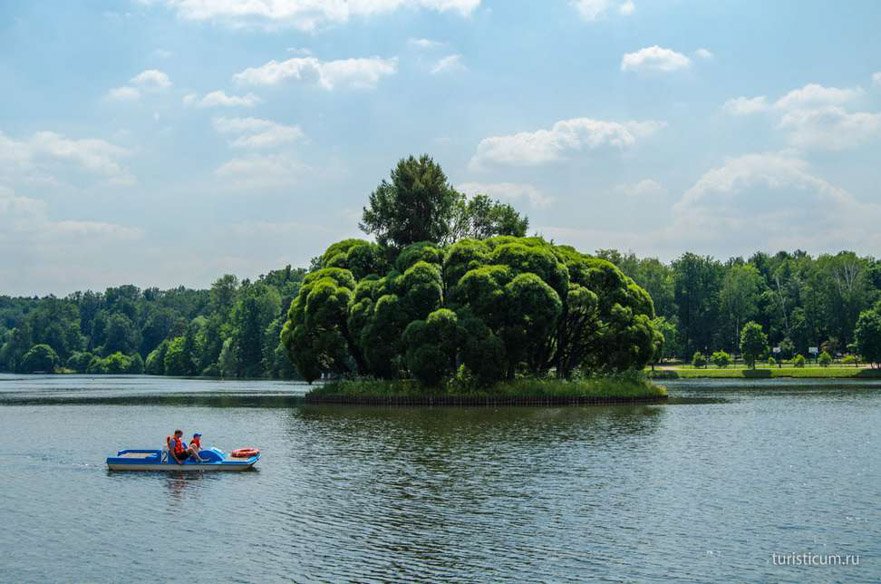
There is a dam separating the Upper and the Middle Pounds.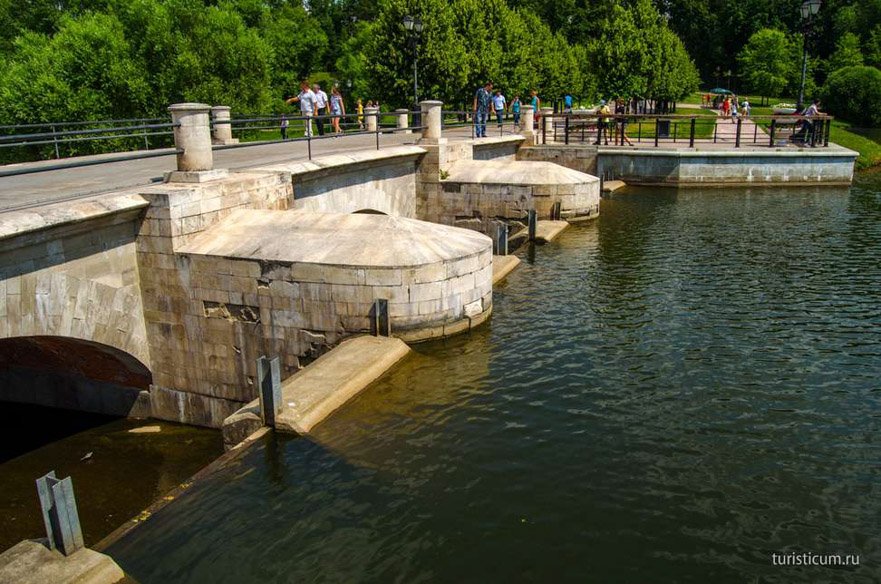
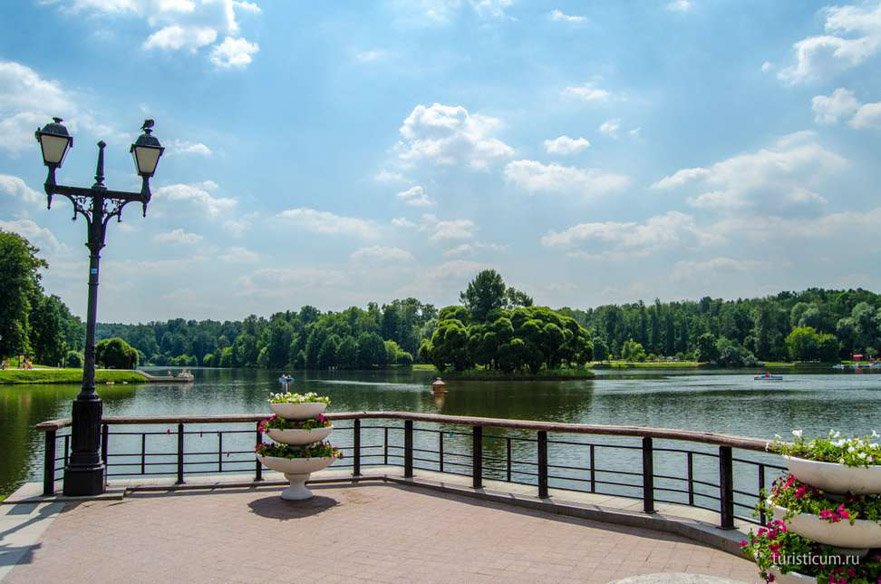
We go further, along Vozdushnaya Street and straight ahead to the most interesting – to Tsaritsyno park and estate. In order to get to the Tsaritsyno Palace one has to pass under the Figured Bridge. But there is also a chance to go along the bridge since there are stairs nearby. It should be mentioned the the Figured Bridge is one of the earliest buildings in Tsaritsyno; its architect was Vasiliy Bazhenov, who built both this bridge and the whole palace for the empress Catherine II.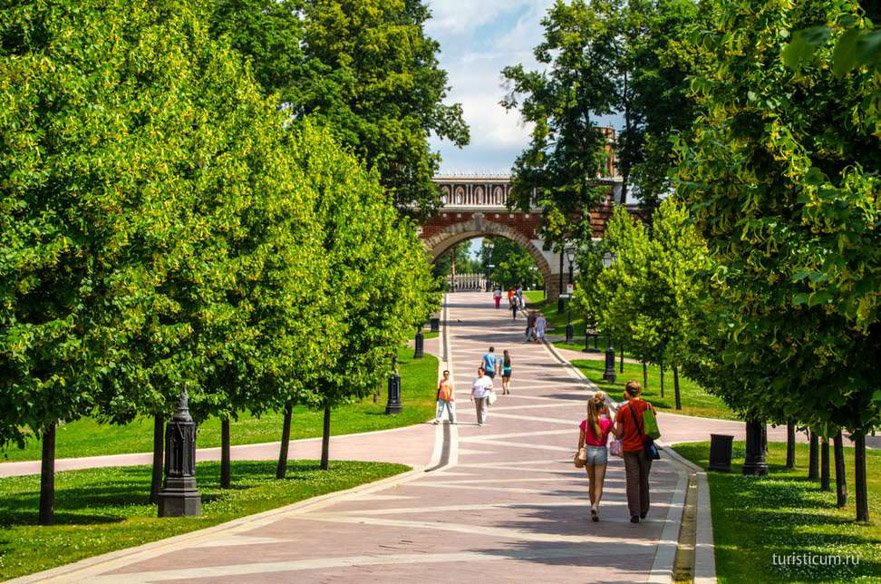
Tsaritsyno palace and its buildings
The bridge was built at the crossing of the main entrances to the Tsaritsyno estate. As a result it may be considered the gate to the estate. And its fancy architecture makes it look like a real defensive construction with towers and loopholes. The bridge has survived perfectly save till our time, so today, when we look at the bridge we see it exactly the way Bazhenov intended and built it.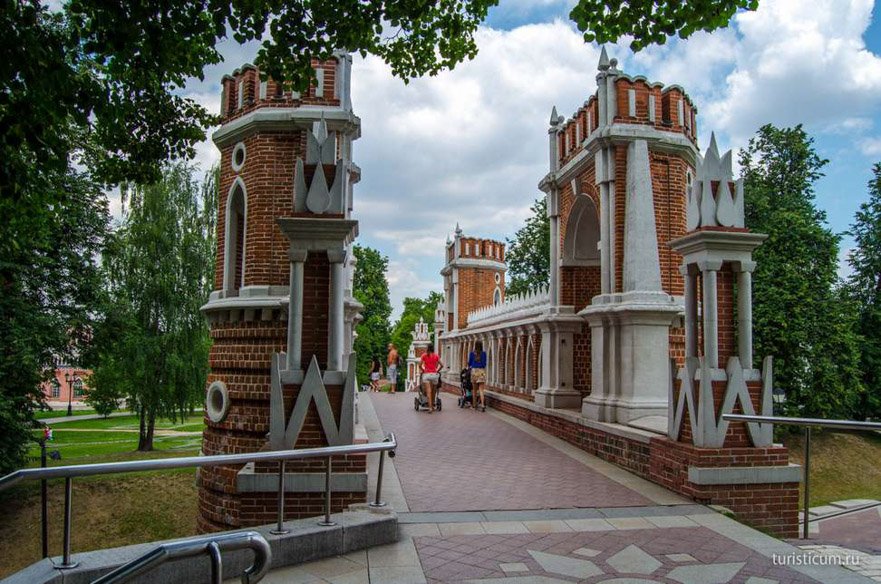
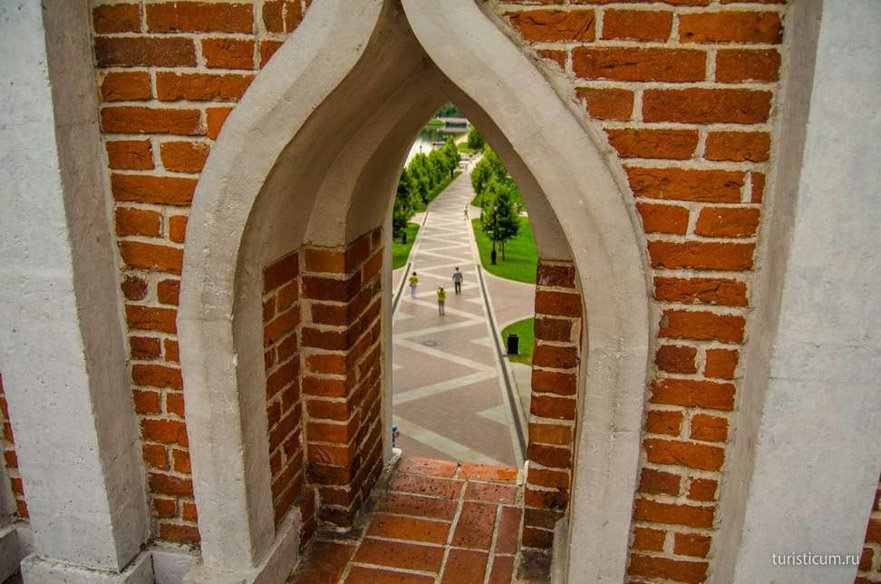
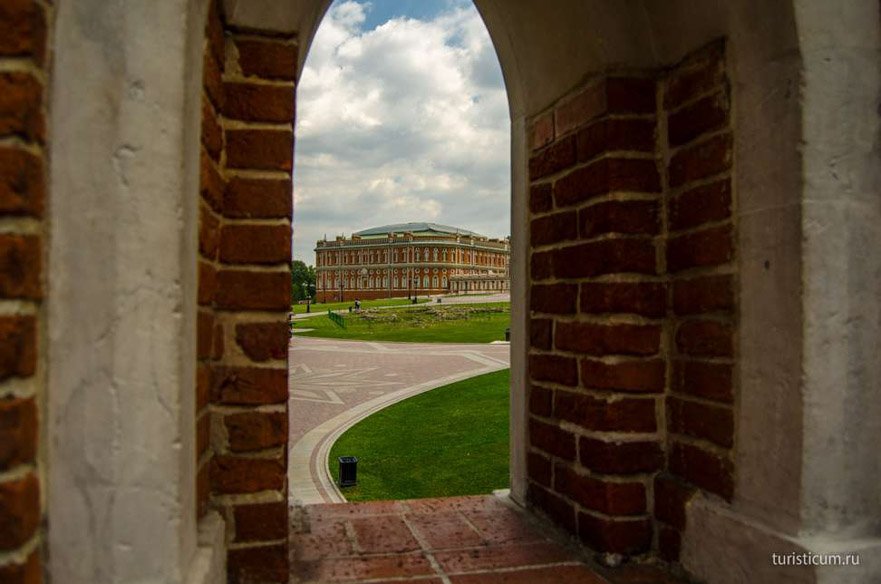
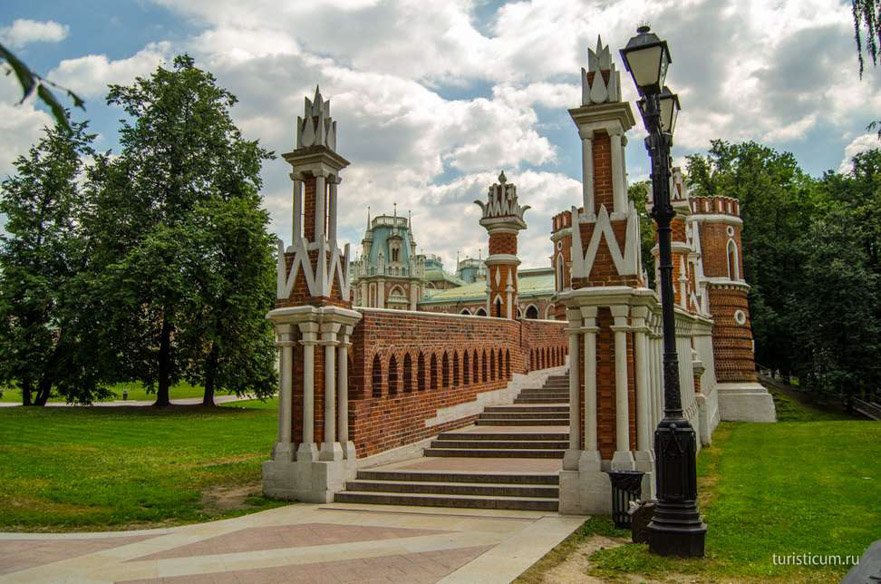
There is the building of the Third Cavalry Corps and the Russian Orthodox temple “Life-giving Spring” in Tsaritsyno on the left of the bridge.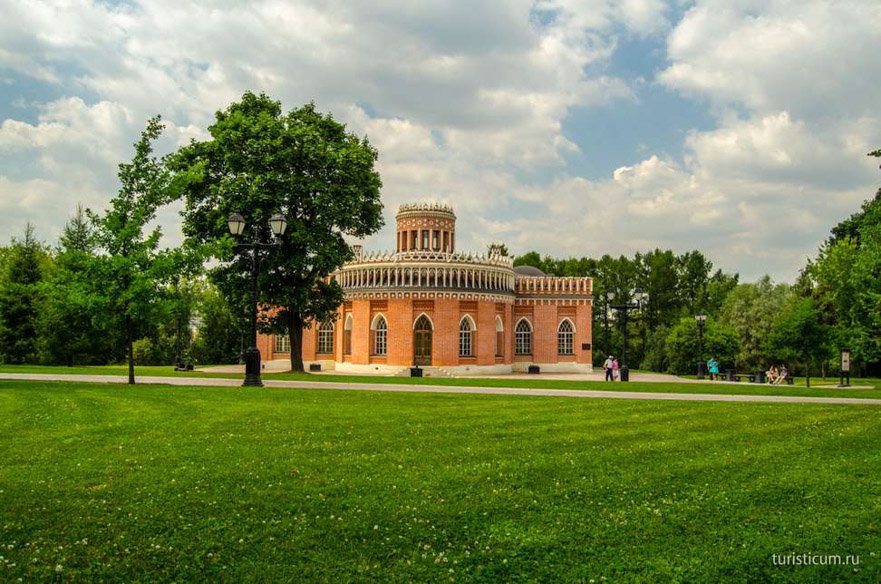
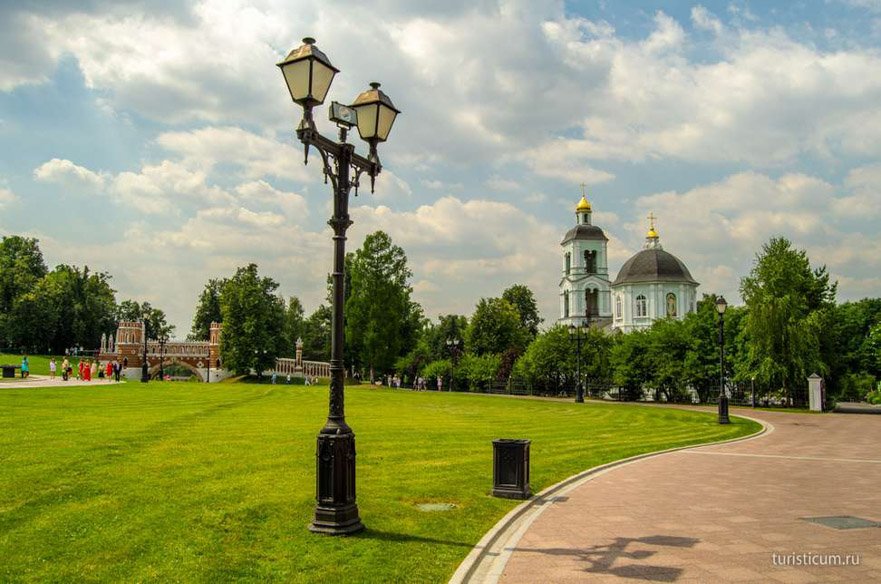
The first church appeared at this place in 1683. Later on stone building replaced the wooden one. Finally, in 1765 the cathedral was rebuilt last.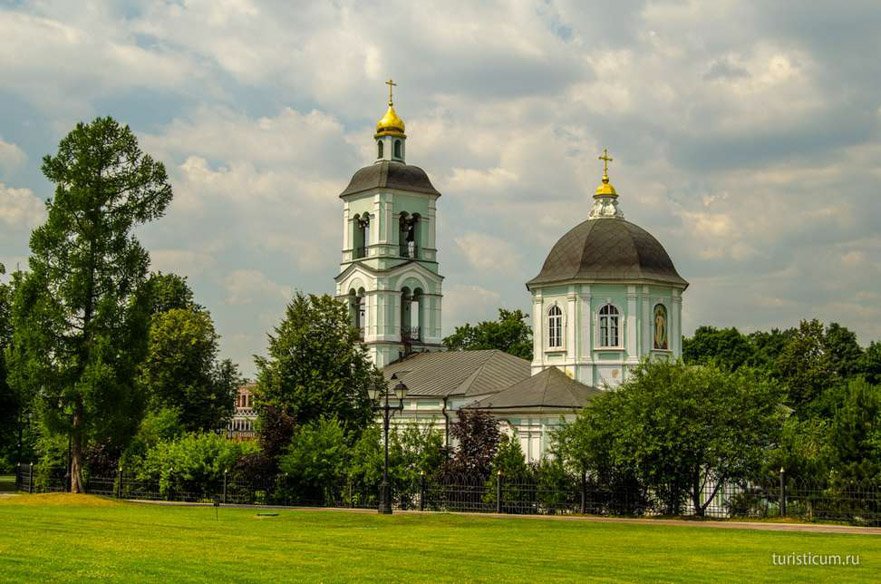
A bit further there is the Grand Bridge over a gulley. Bazhenov did not finish it since the empress estranged him from installation of her estate before the bridge completion. As a result it was only finished in the 19th century.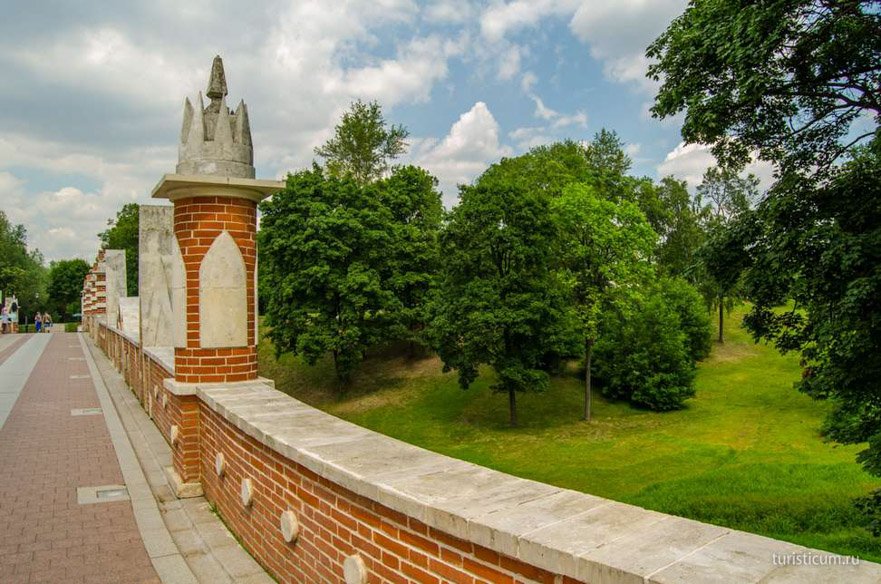
If we get back to the Figured Bridge, turn to its right, round the main palace, pass the Polutsirkulyarnyi Palace and the Opera House we will finally get to the Grape Gate. By the way, initially its name was figured. The name Grape appeared in the 20th century due to the fancy décor resembling a bunch of grapes hanging over the gate passage. The gate is a nominal border between the park and the estate. It also completes the developed prospect between the Grand and the Middle Bridges.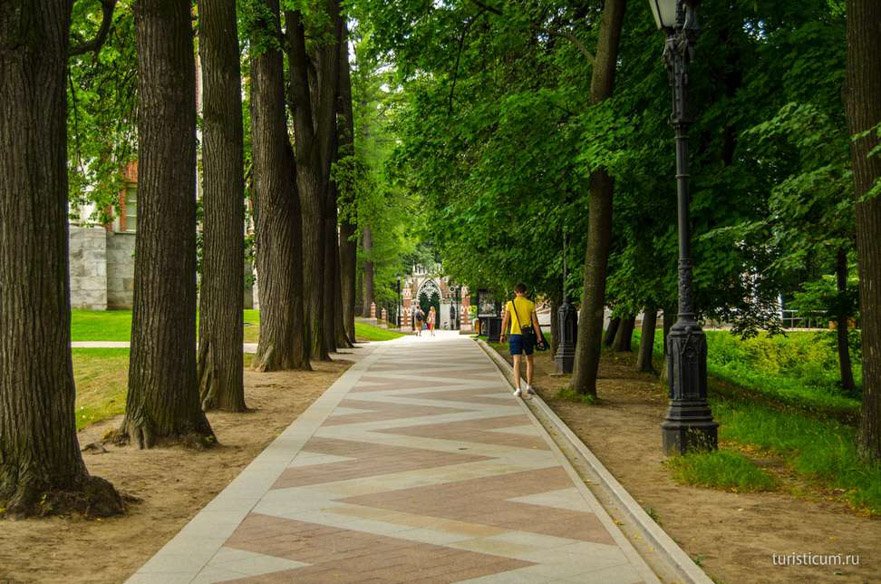
After the Figured Bridge we find ourselves in the middle of Tsaritsyno architectural complex. There is a number of basements in front of the Grand Palace. The basements of the Kammerjungfer Corps are on the right of the palace.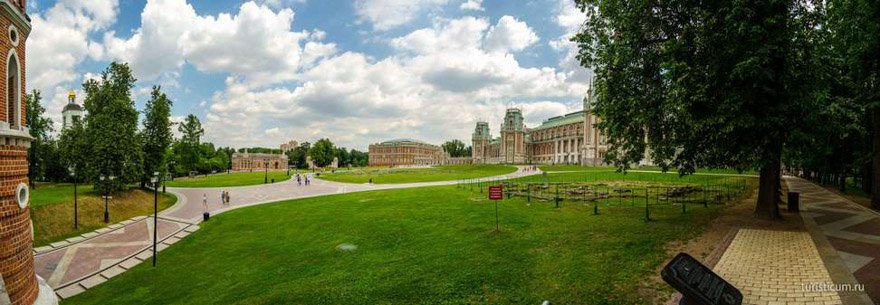
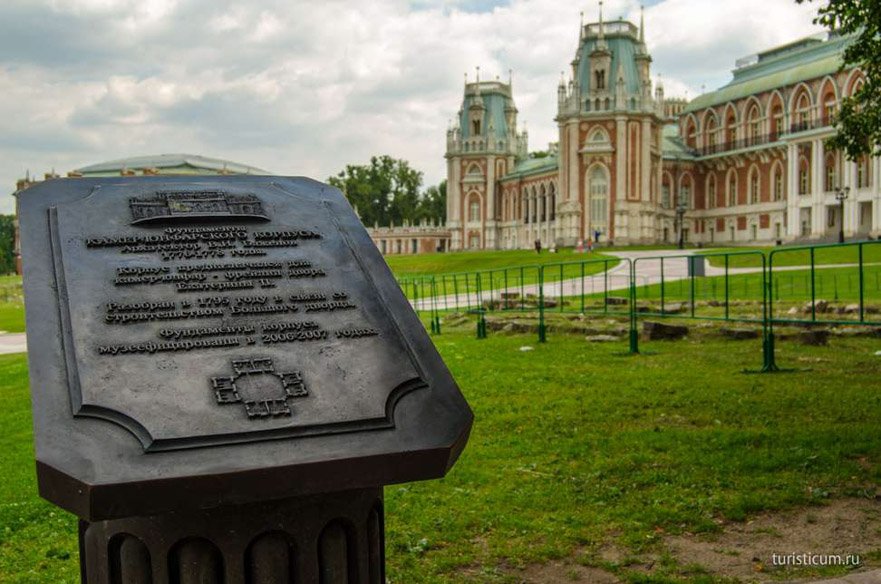
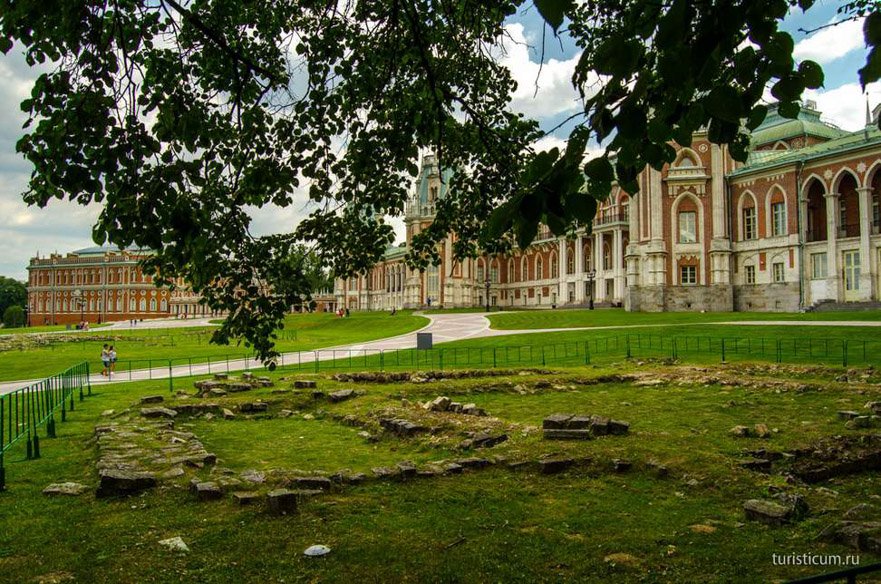
The basement of the Big Courtiers’ Corps is in front of the Tsaritsyno Grand Palace. Bazhenov built it in 1784. Later on in 1795 Kazakov the second architect of the Catherine’s palace dismantled the building.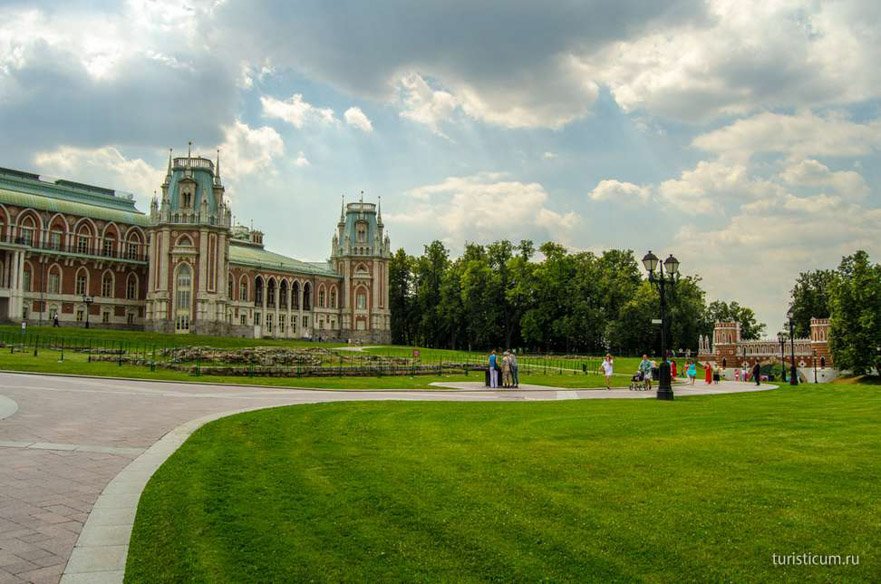
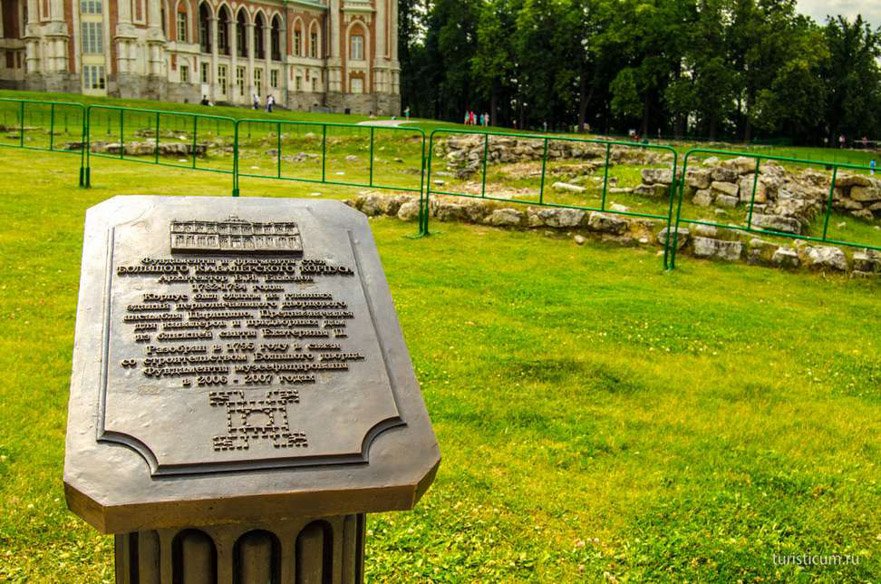
Bazhenov also built the First Cavalry Corps which is on the left of the Grand Palace.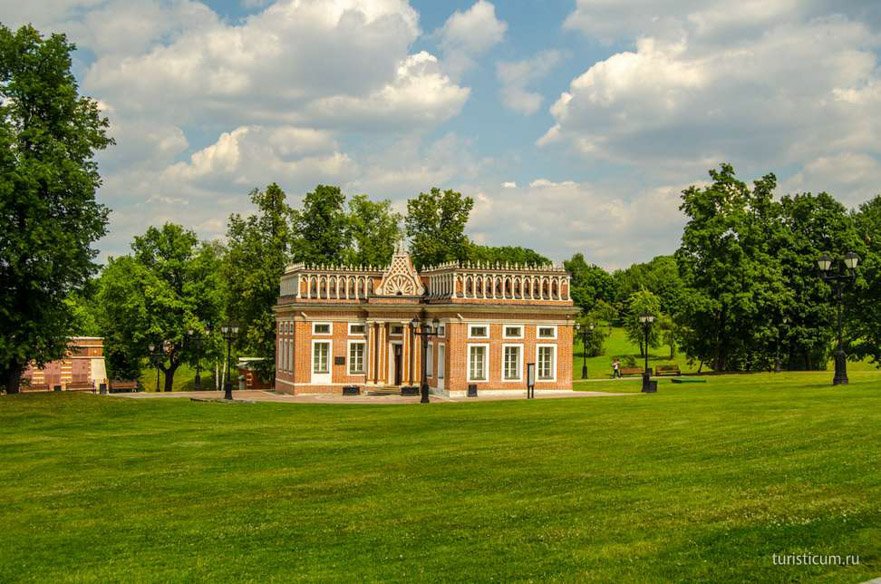
The main pearl of the architectural complex is still undoubtedly the Grand Palace itself. A palace with history of destruction. The empress approved the project of Tsaritsyno architectural complex and in 1776 there began the tremendous construction that lasted for decades. The performance of the project was hard; Bazhenov even had to take on loans in care of his own self in order to complete the construction. Catherin II inspected the buildings in 1785 and the verdict was shuttering for Bazhenov. The empress positively disliked the palace. Catherin ordered to dismantle it. Matvey Kazakov, Bazhenov’s apprentice, became the new architect and started the construction of a new palace. The flow of construction was hard and slow. Catherine II died in 1796 by the time the Tsaritsyno Place had only been finished at the draft level.
This is the moment when the history of Tsaritsyno Palace withering began. None of the successors of the throne liked the palace and Tsaritsyno never turned into royal residence.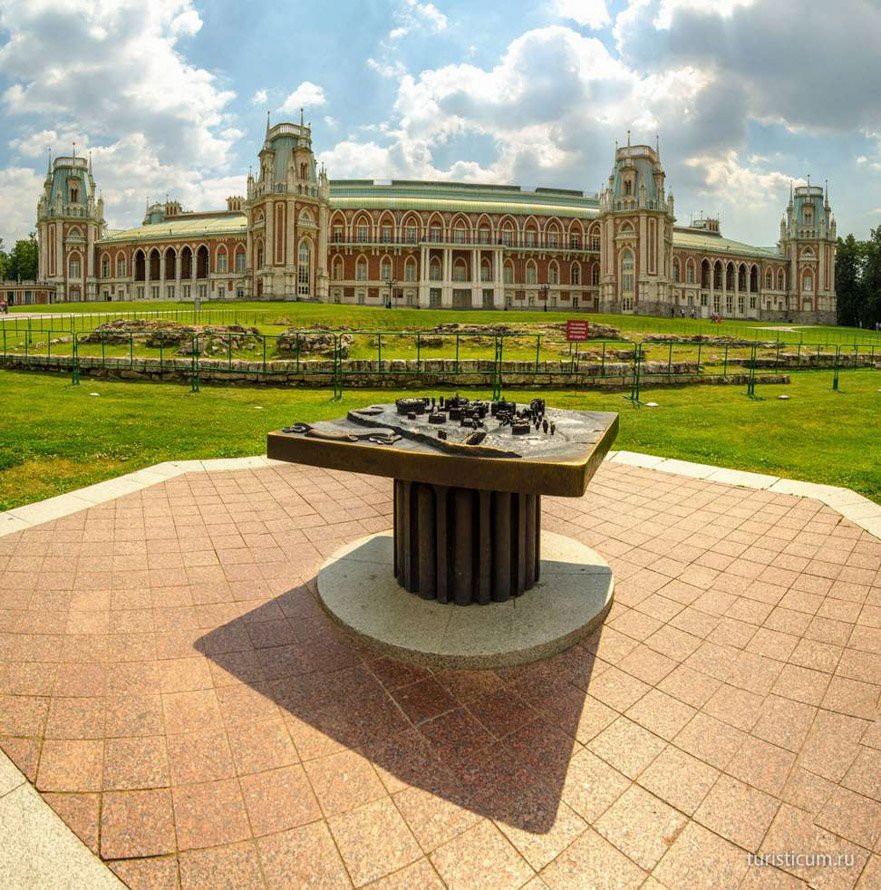
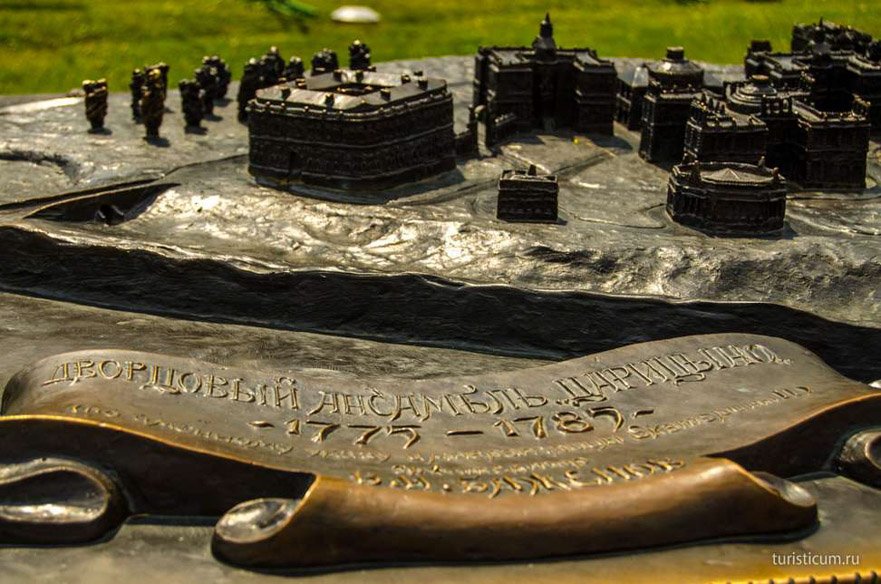
An arched gallery joins the Grand Palace with the Bread House.
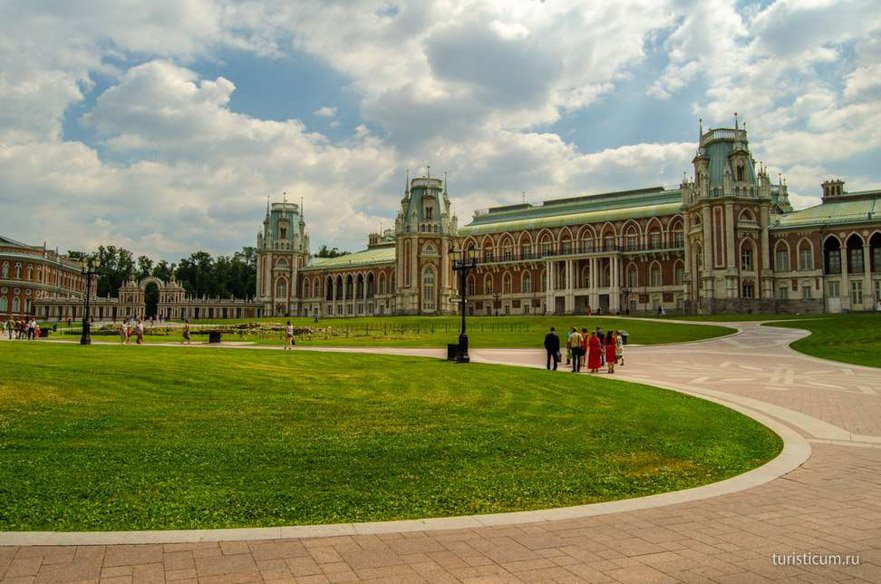
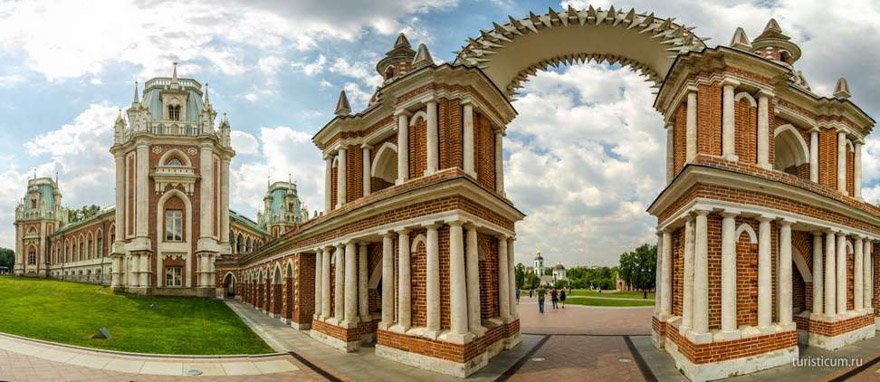
There is a memorial in front of the Bread House. It is devoted to the two architects – Bazhenov and Kazakov – both of whom worked at the construction of Tsaritsyno architectural complex in.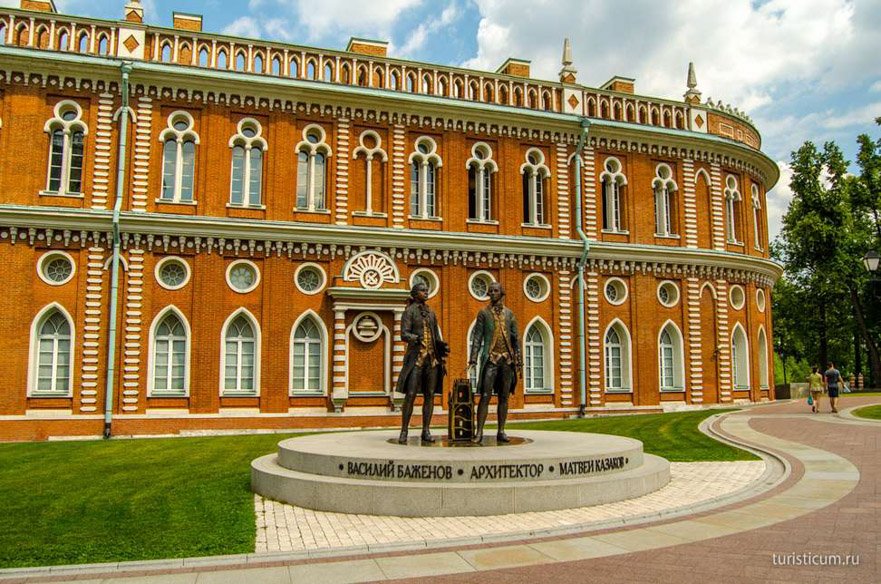
Tsaritsyno Museum
Here is also the entrance to the Tsaritsyno Museum. Visitors enter the indoor premises through subways. As a result, the palace is completely sealed from the outdoors. All the necessary information about the museum open hours and ticket prices is at the Tsaritsyno Museum official website.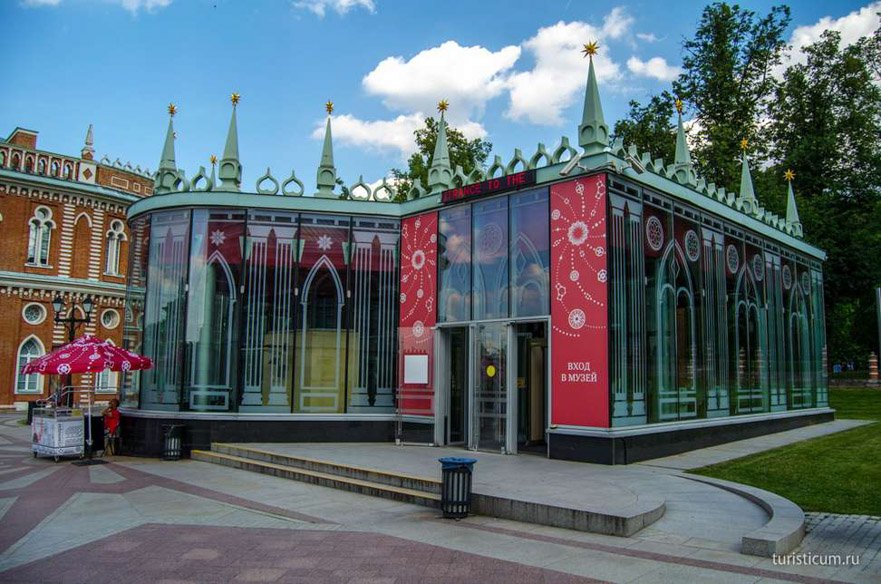
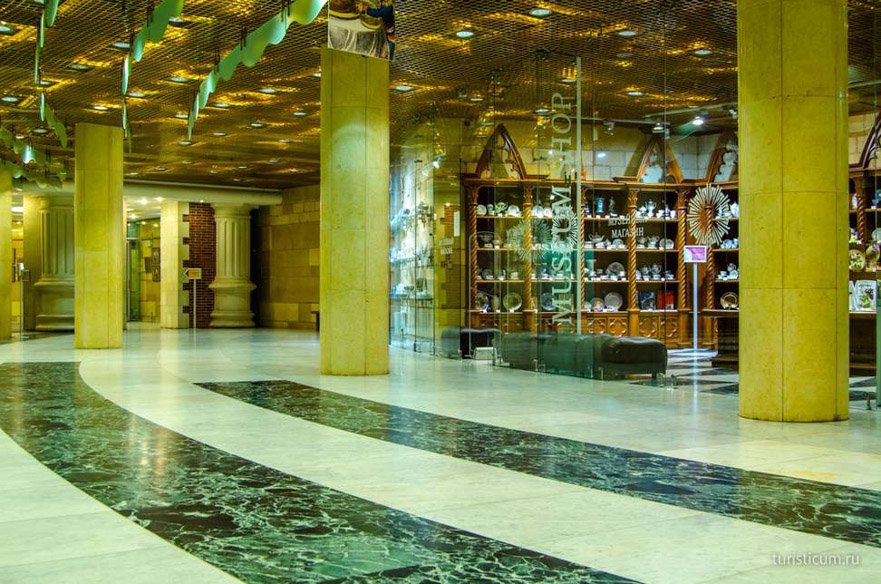
There is the model of the palace in the first museum room. It demonstrates the condition of the building in which conservators received it. It looks abandoned and deserted recalling an ancient prison. This is how the writer Nikolay Karamzin named it in 1816: “The palace looks like a dungeon”.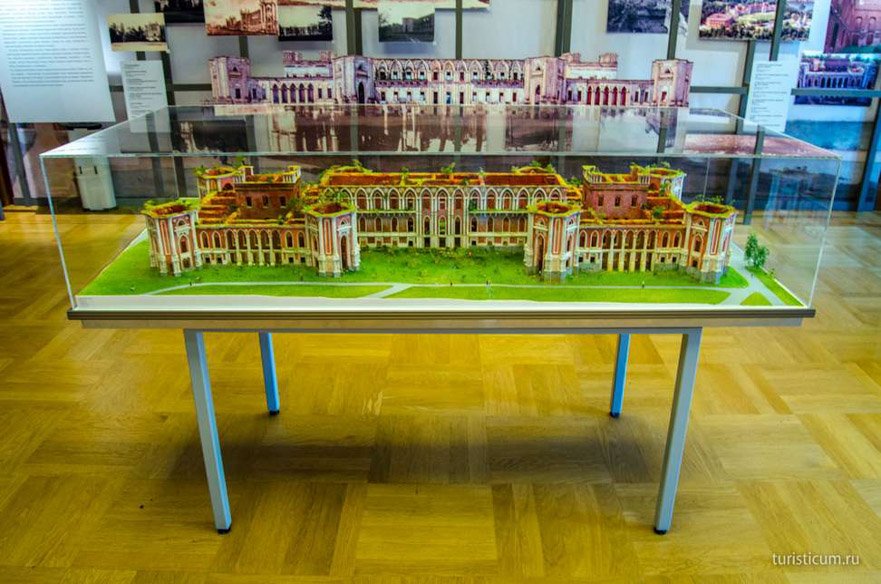
There are both permanent and temporal displays in the Grand Palace. It is prohibited to photograph the temporal displays. At the same time one can take photos of permanent displays without flash-light and trepied of course. Room with archeological evidences found on the territory of Tsaritsyno begins the display.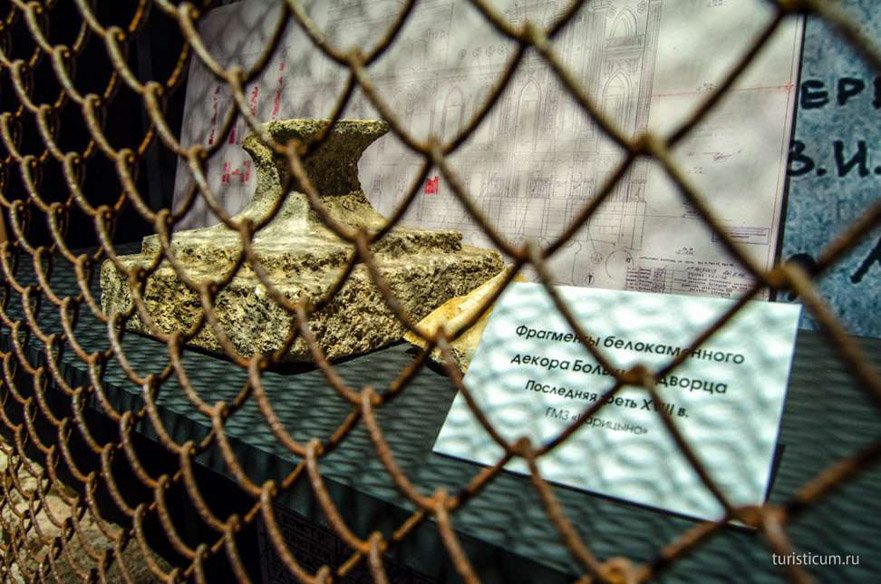
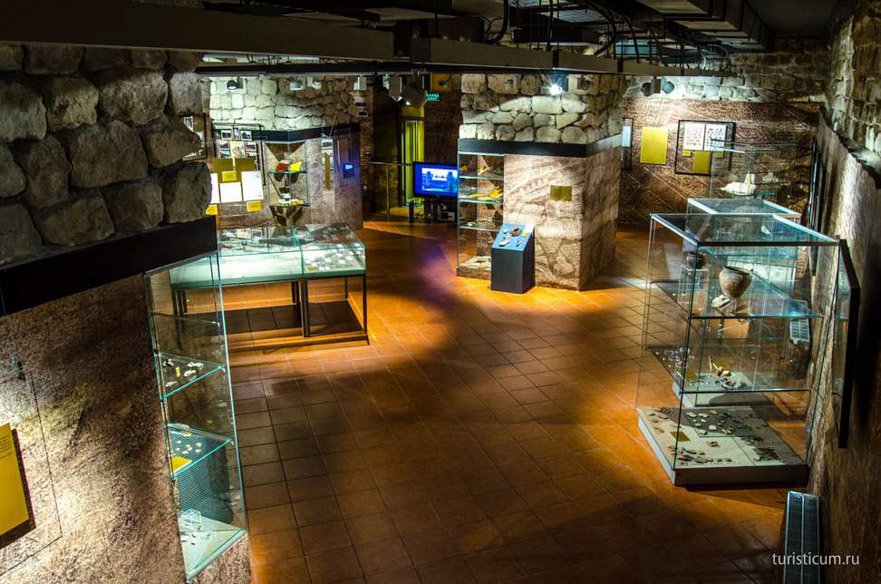
Another interesting display is the “Silver Treasury” of the palace. Here one can admire jewelries by famous jewelry masters and workshops from the 16th up to the 19th centuries.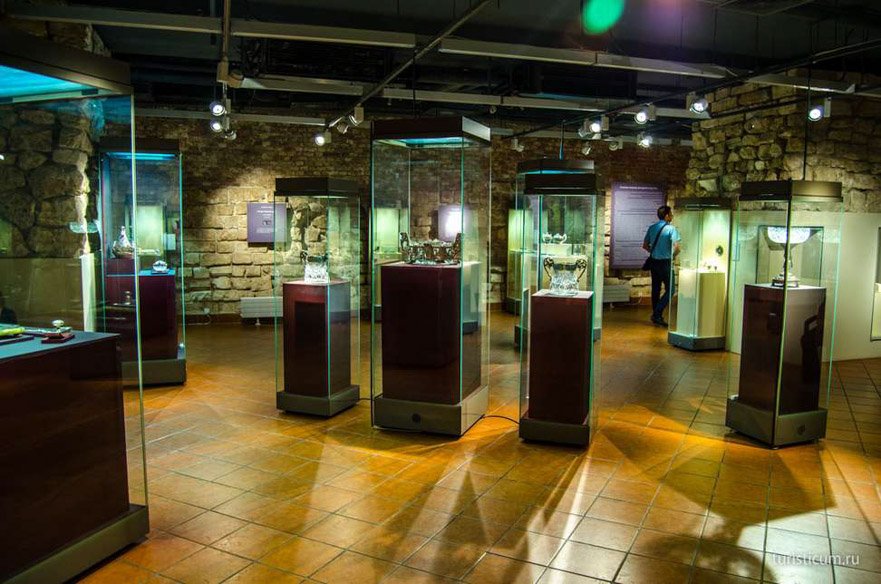
Apart from the displays one can enjoy a mere walk along the renovated rooms of the palace. Though it is hard to imagine that someone lived and enjoyed life here – music never played and not a single ball was held at this place.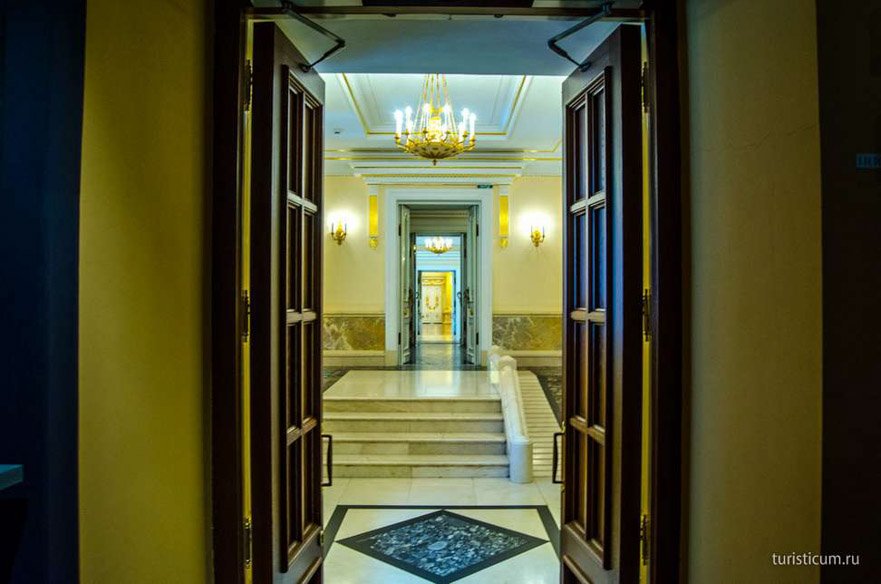
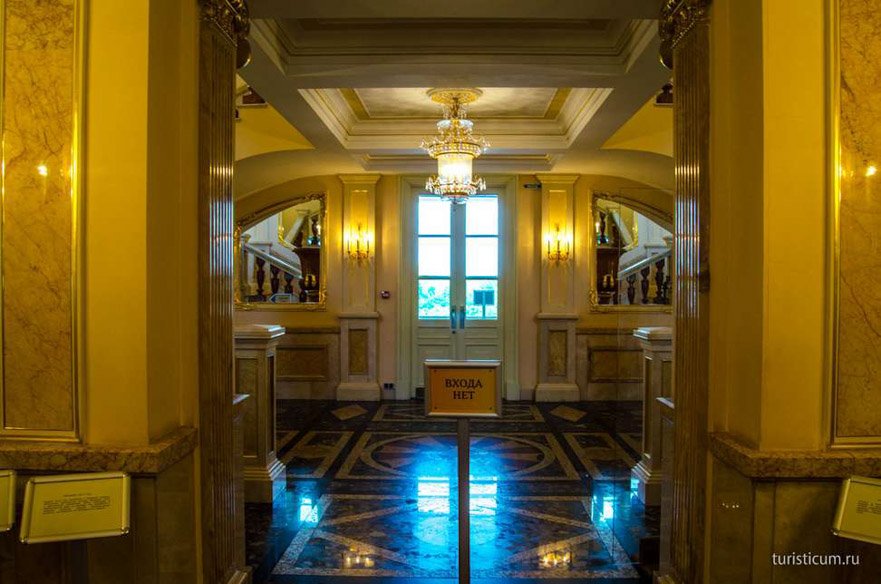
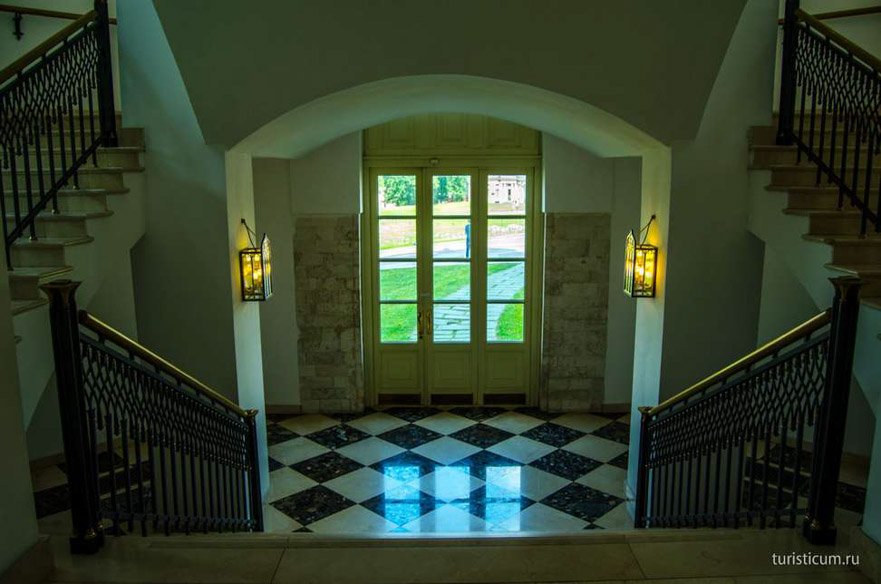
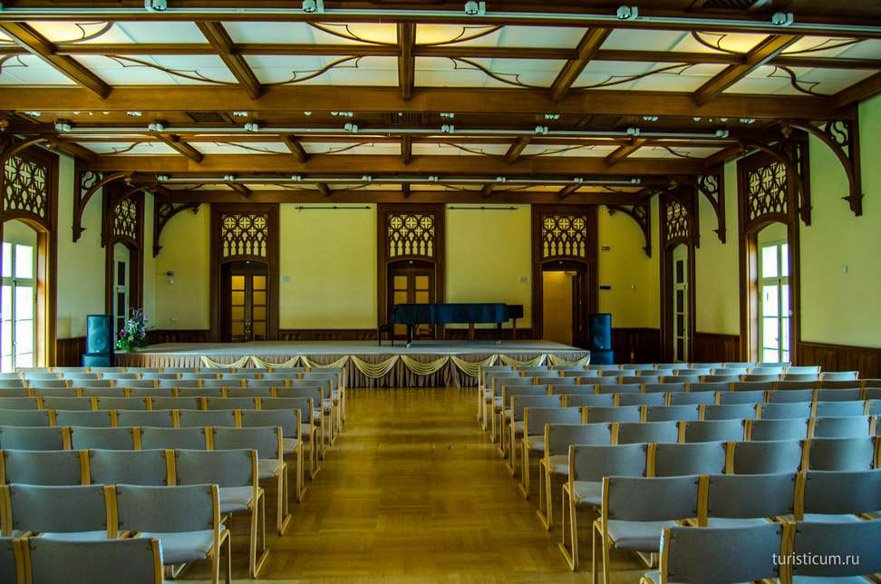
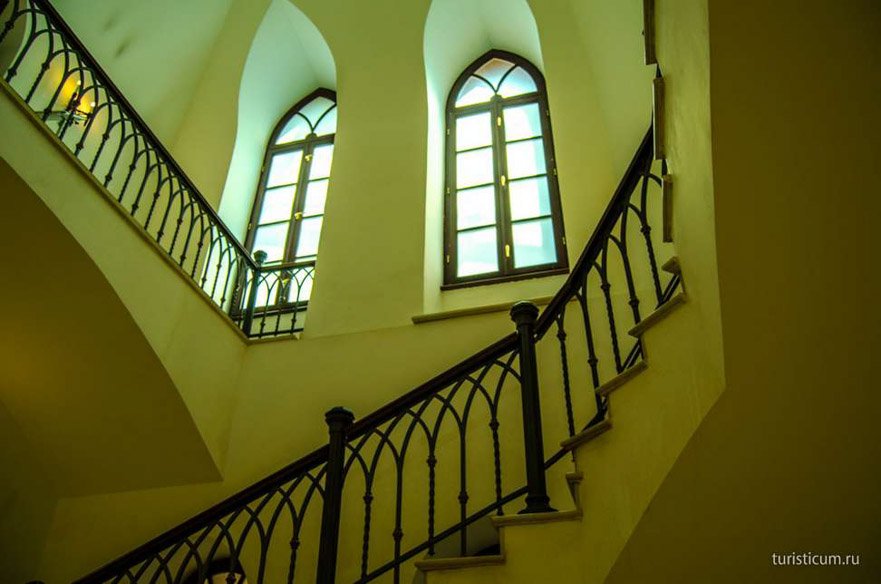
Picturesque views of the territory in front of the palace open from its windows.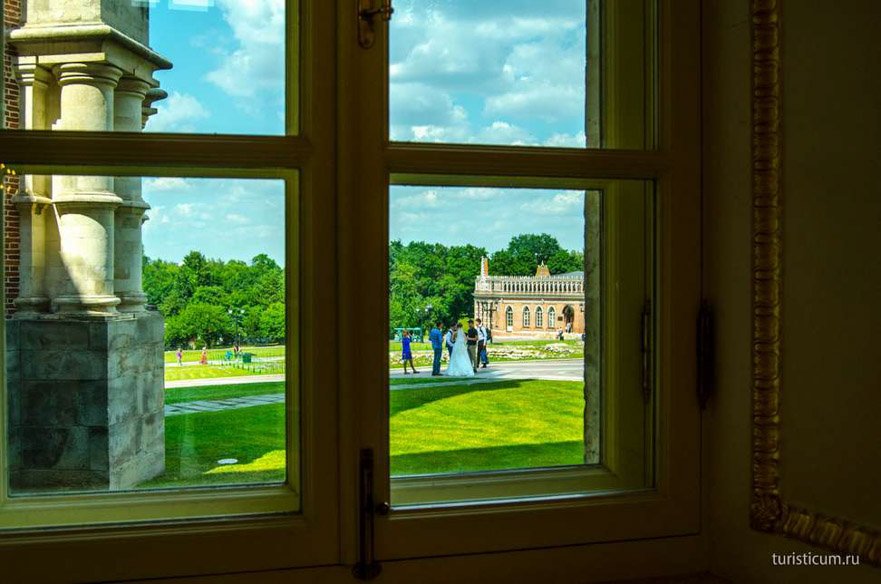
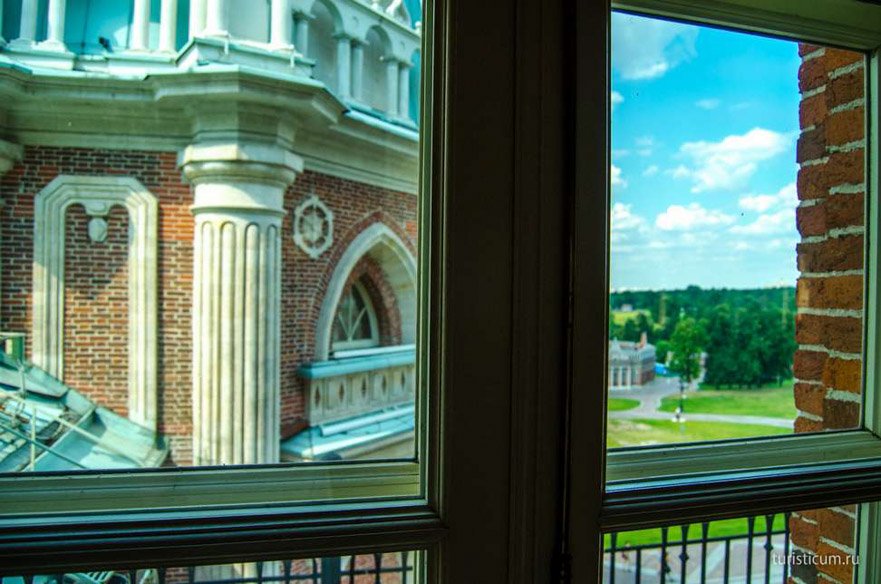
Catherine Hall is the most luxurious of all the halls in the Grand Palace. It became the main hall of the palace after the reconstruction. And the mastermind of the construction Catherine II gave it her name. Parquet-flooring, cut-glass chandeliers, moulded decorations make the Catherine Hall fascinating.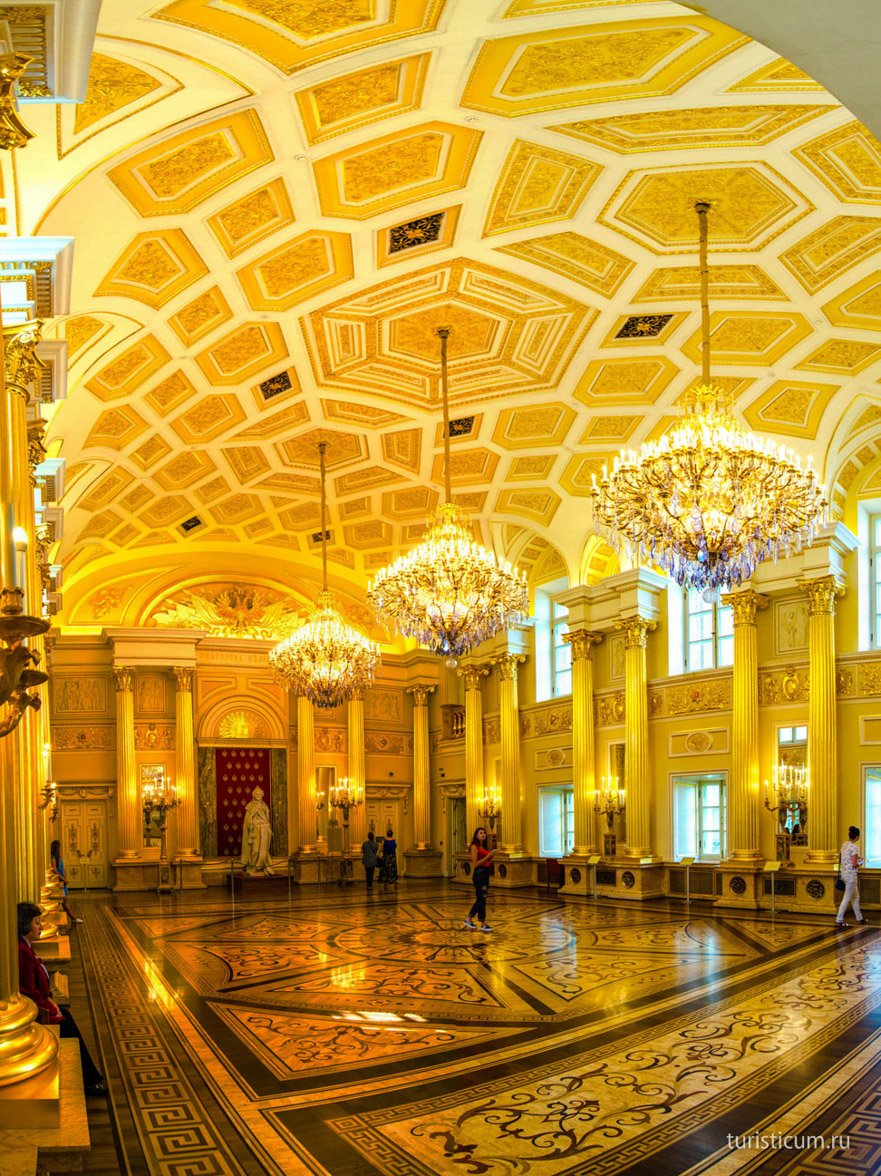
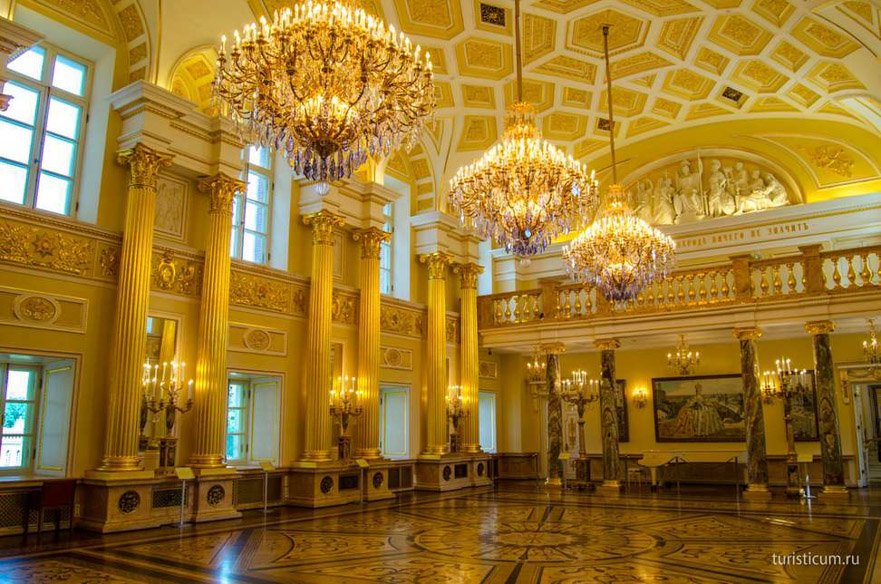
The main decoration of the hall is the empress’ marble statue that weighs 3 tons (6613.87 lb.). The statue enriched the hall of the Moscow State Duma and had a miraculous escape after the Revolution in 1917.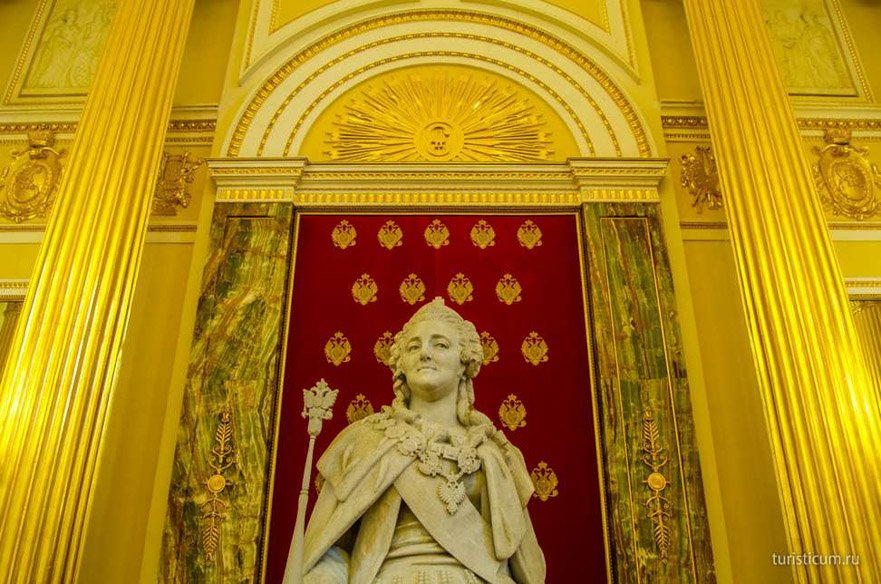
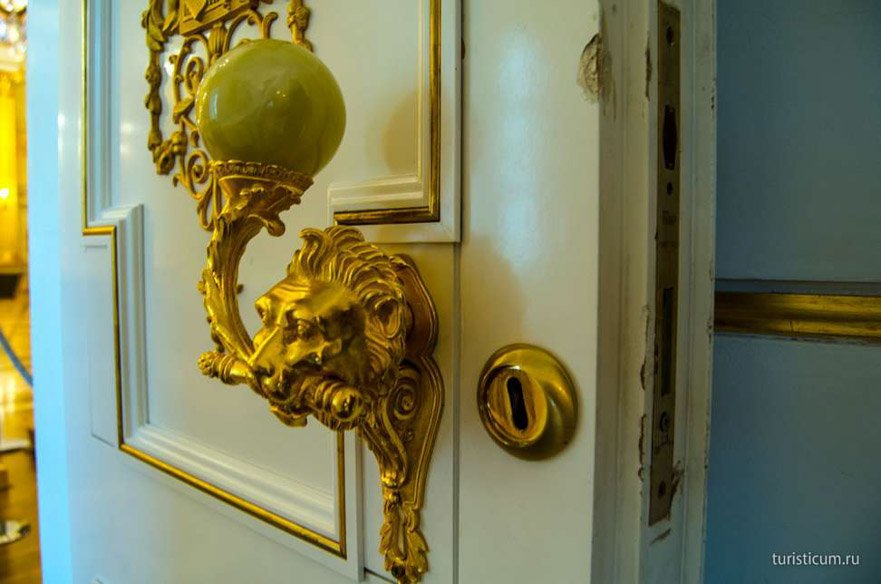
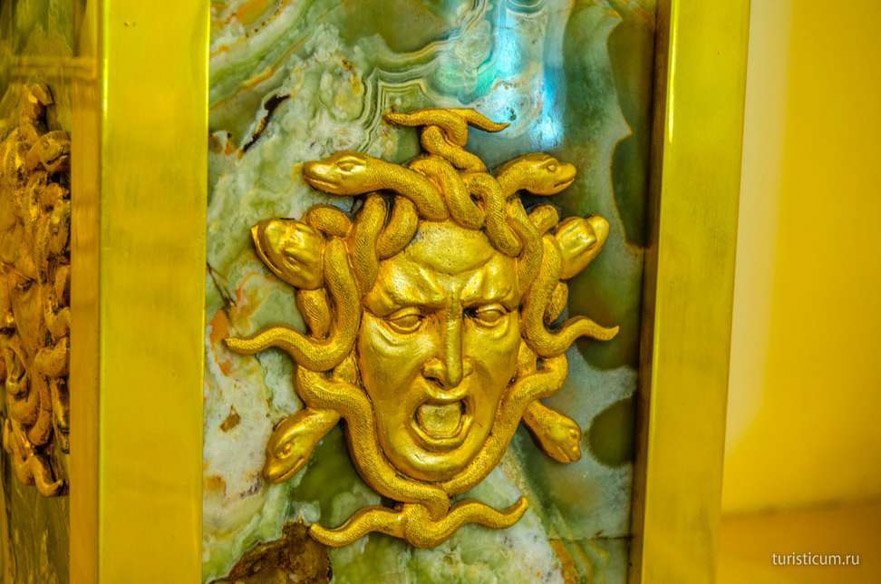
It took us above one hour to see all the displays in details. After enough of walks along the Grand Palace we went to the Bread House. The Bread House received its name in the 19th century after the high reliefs on its front – a loaf of bread with a saltcellar. Behind the backs of architects who built the Grand Palace one can see the high relief and cipher of Russian letters “X” and “C” (stand for хлеб – bread, соль – salt).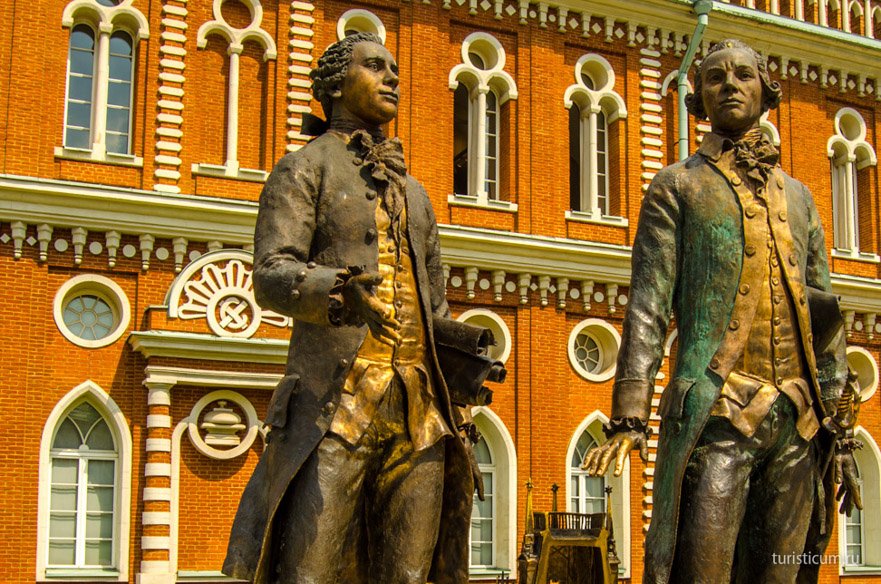
The cube building has a courtyard inside of it for carts with food supplies. Bazhenov did not have time to complete his plan due to the above mentioned reasons and the glass dome over the Bread House only appeared in 2005 having turned the courtyard into an atrium.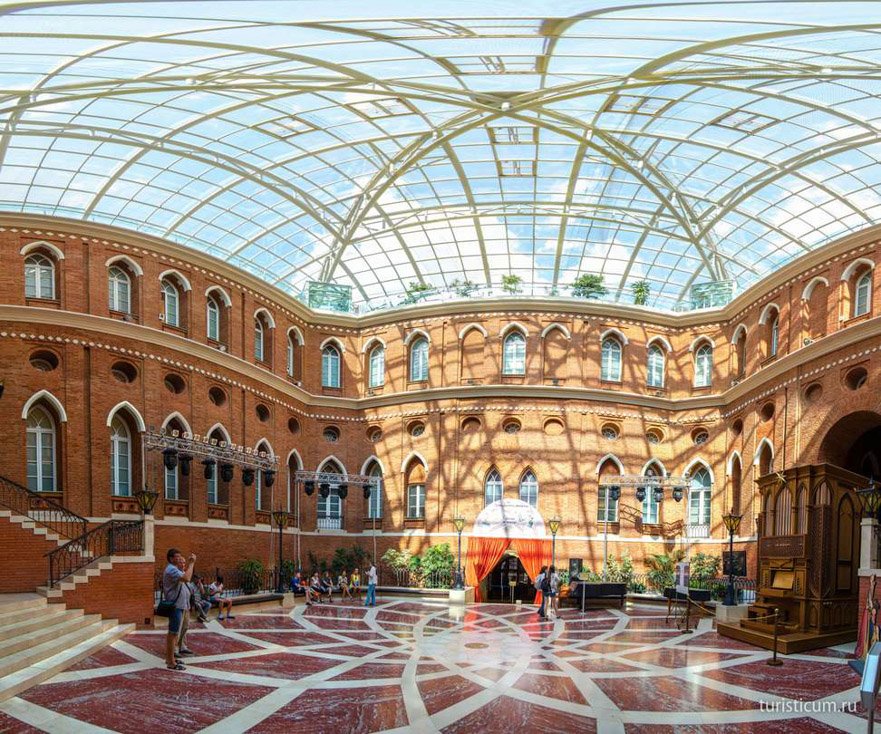
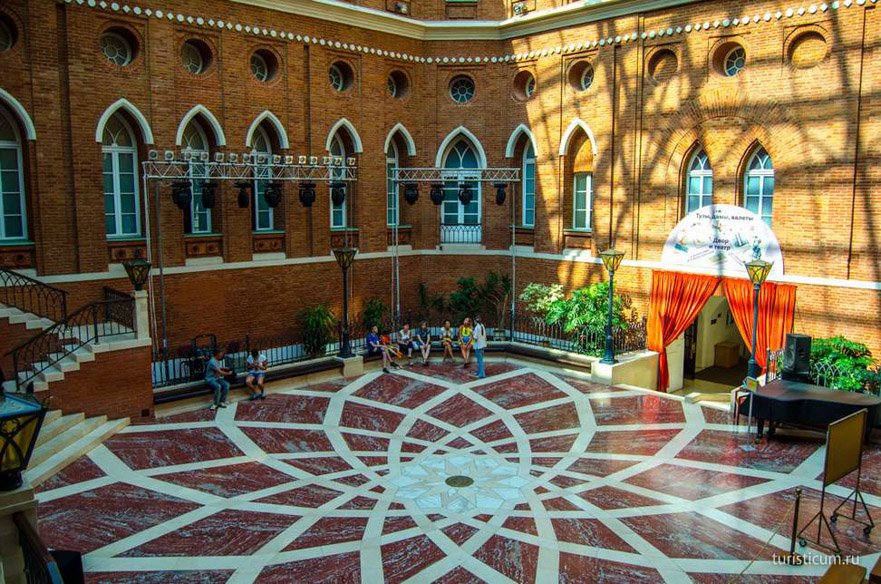
Tsaritsyno Park
We leave the museum the same way as we entered it.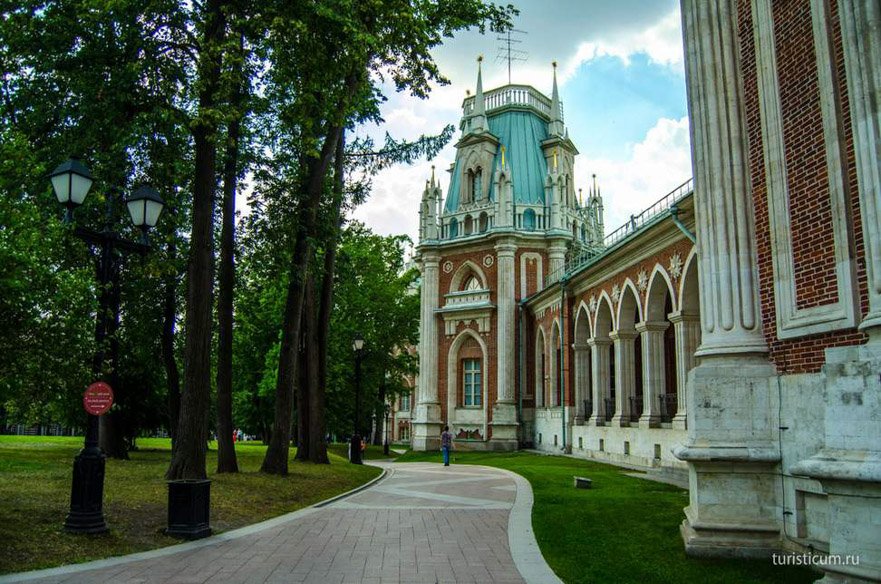
We find ourselves in the Tsaritsyno Landscape Museum – Reserve. Its territory is huge and one can walk along it as long as along the museum itself. But apart from the fascinating nature the park is also home for many artificial attractions and one can never get bored here.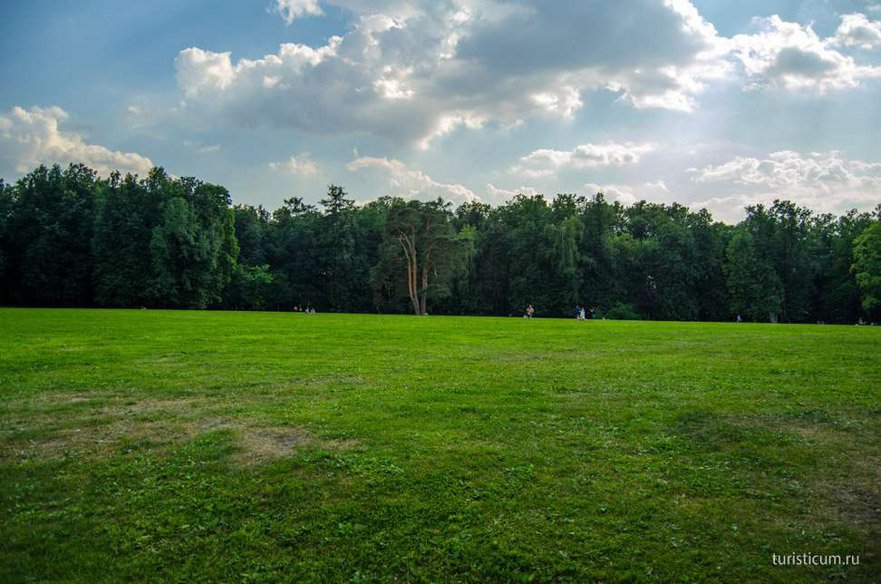
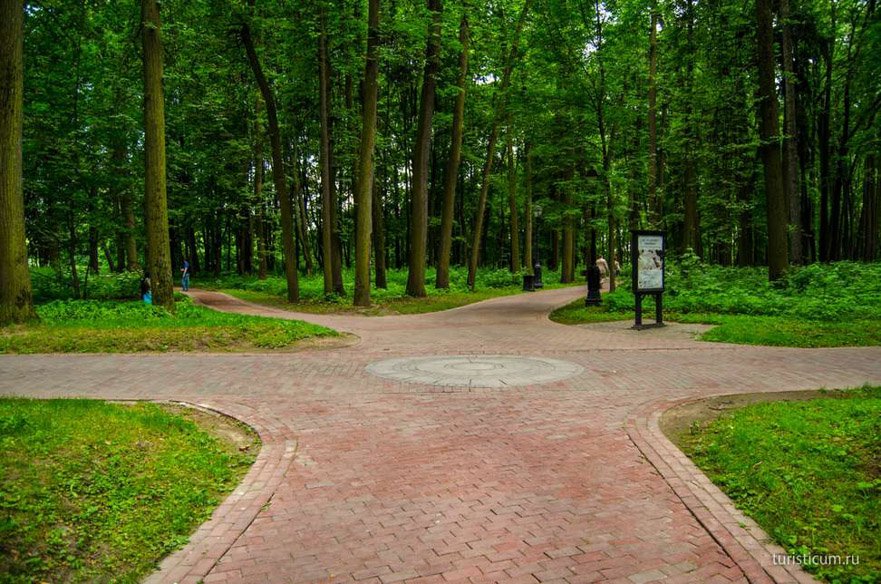
Even though here are information stands with the location map, it is quite easy to get lost. Even though here are much fewer people than in the front part of the reserve, they still do appear and can give directions to the exit, if needed. We went to walk over the hills and far away.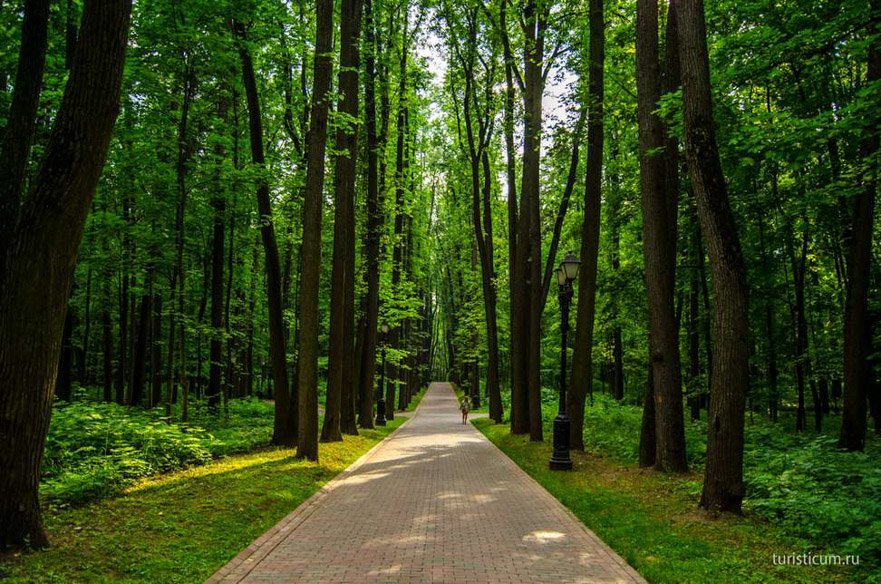
And the first “far away” attraction we walked into was the “Nerastankino” Pavilion. The pavilion was built in 1804 and served as a place to rest for promenade-makers. The “Nerastankino” Pavilion performs the same function even now; strollers hide from the midday heat and rest after exhausting walks in it.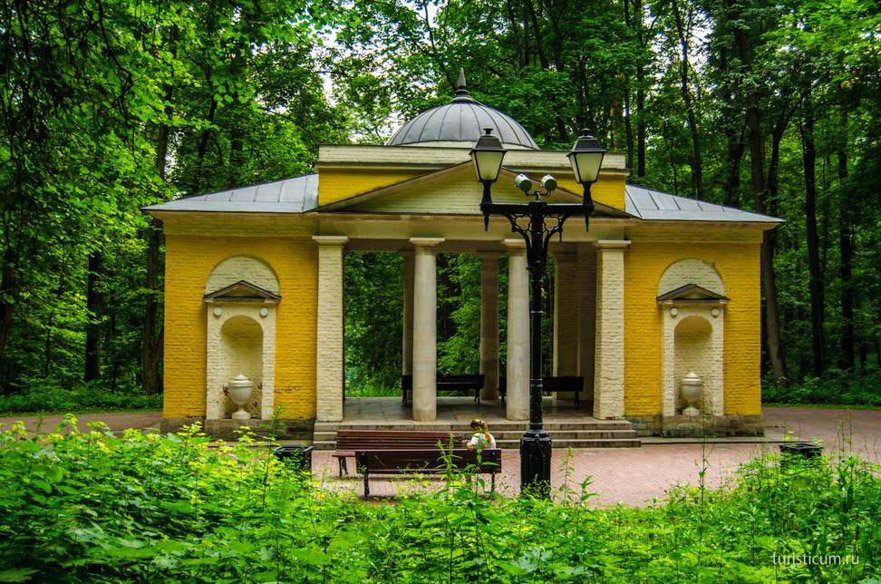
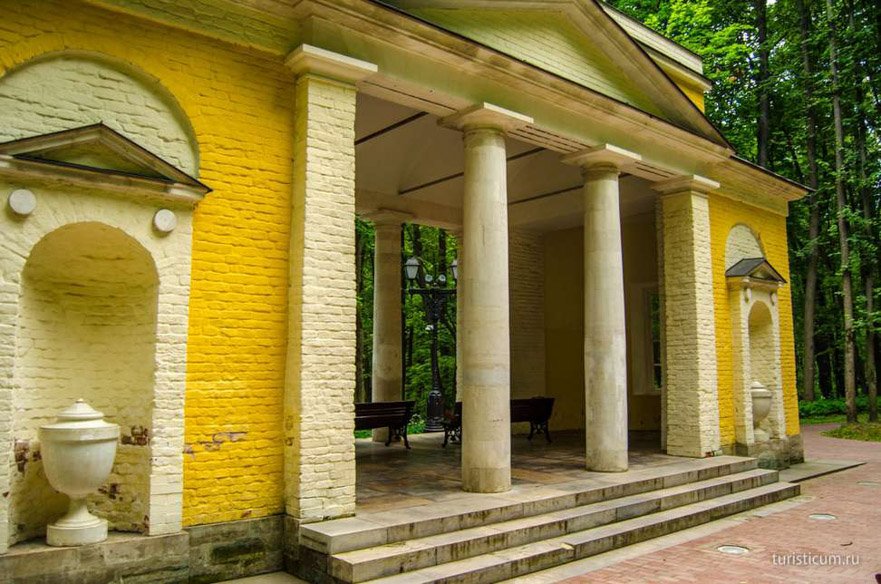
The Driada Statue is not far from the pavilion. There are several similar statues in the park.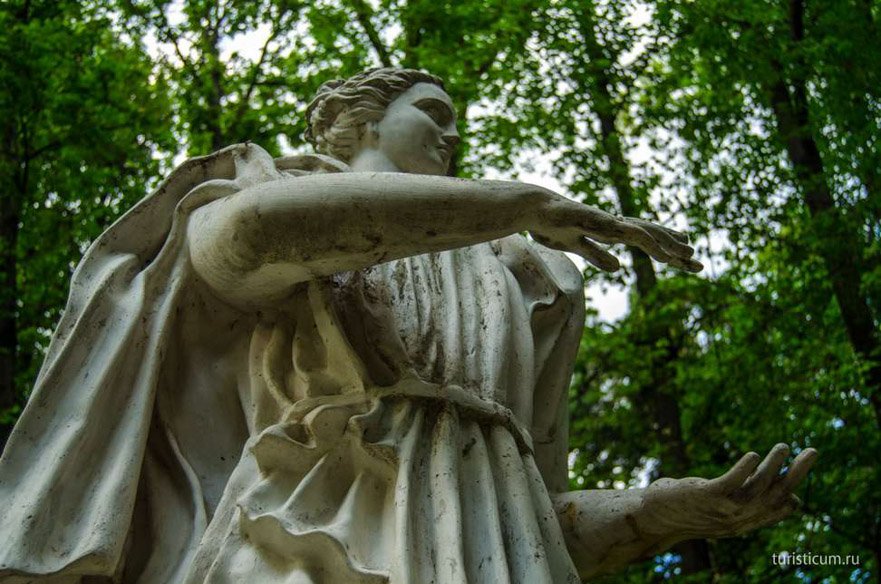
Then our legs took us to the Ruin-Tower that was built with the decorative purpose the same year as the “Nerastankino” Pavilion.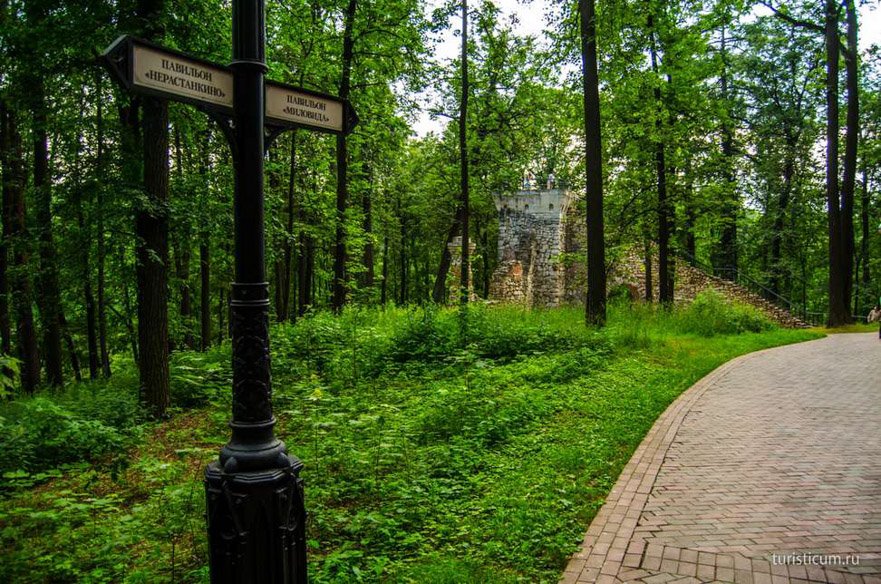
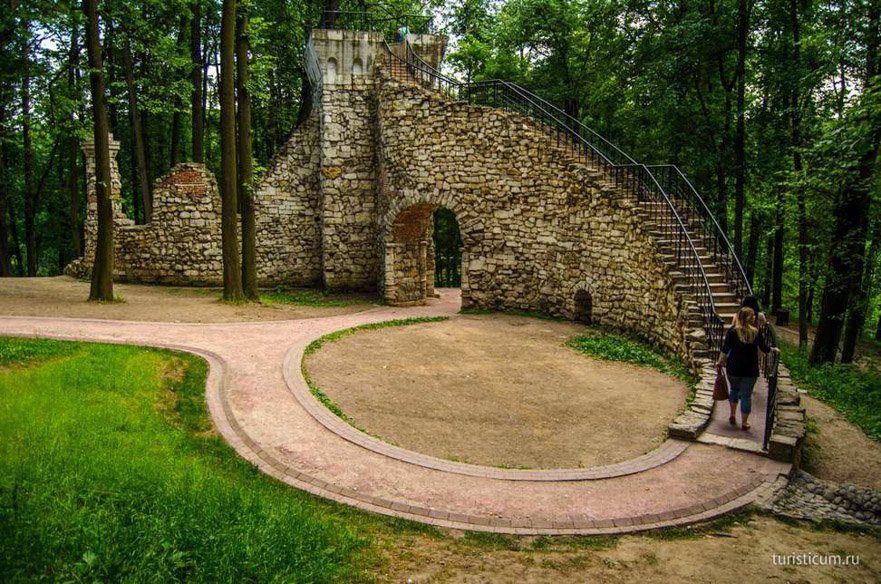
Apart from the above described, in Tsaritsyno Park we also paid attention to the following attractions: the “Milovida” Pavilion, rotunda “Ceres’s Temple”, some decorative bridges and statues. All of them will only make it more interesting for you to walk along the beautiful park.
Walking along historic places is not only aesthetically delightful (providing these historic places are renovated and set in order), but also useful for overall development. For example, apart from the history of the Tsaritsyno estate itself it will be curious to find out the following. The first reminders of the place known as Tsaritsyno root back to the 16th century. Back then these places were called Black Mud. Later, the estate built by boyars Streshnevs also received this name. The owners changed and in March 1683 Aleksey Golitsyn – Ivan Streshnev’s grandson – became its owner and his descendant Leo Golitsyn in his turn became the main wine-maker of the Abrau-Durso Estate. Sergei Kantemir was the last owner from whom Catherine II bought the estate in order to build the palace.
It is extremely pleasant that such places as Tsaritsyno Museum – Reserve arise in people keen interest to history, desire to see and experience new places.